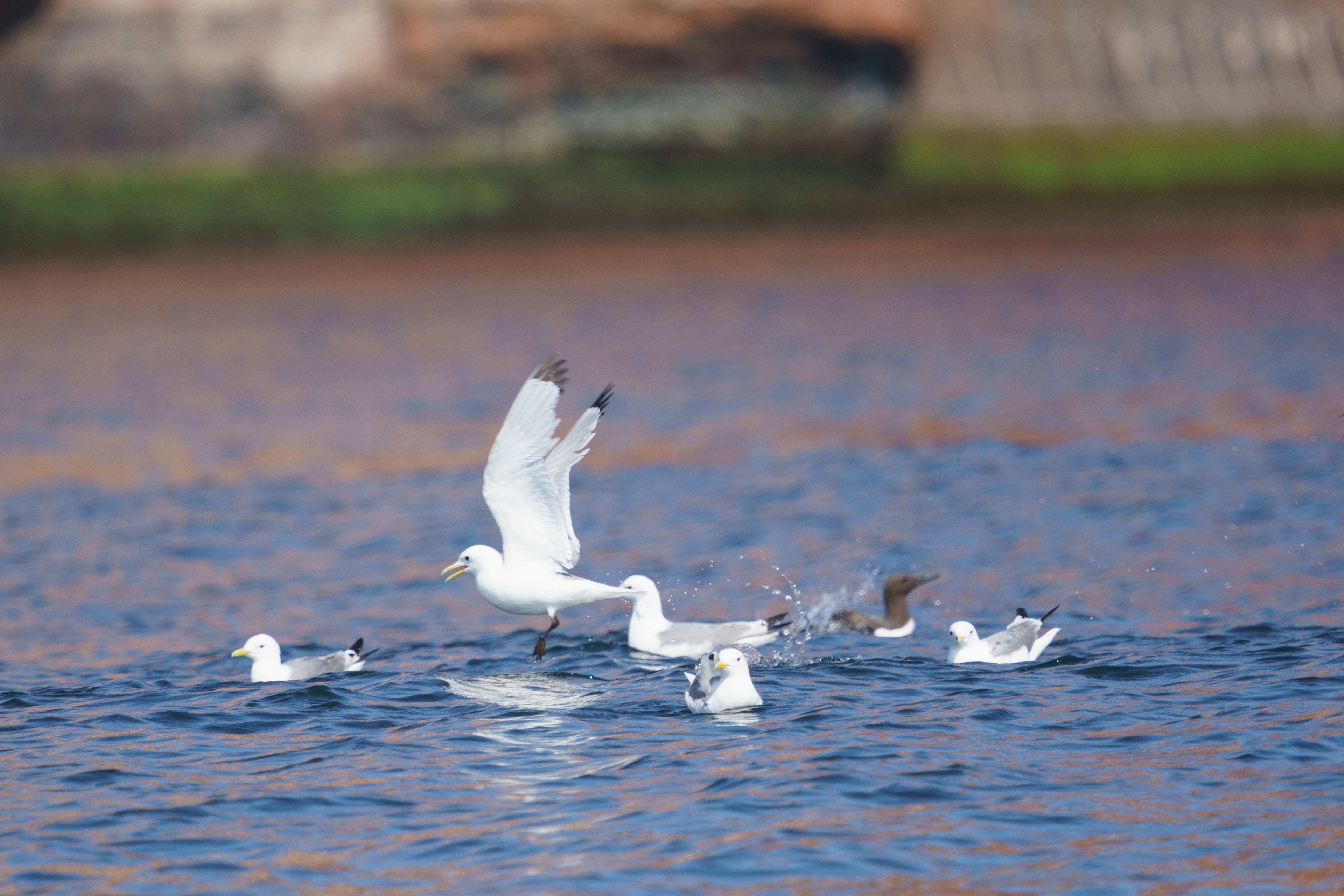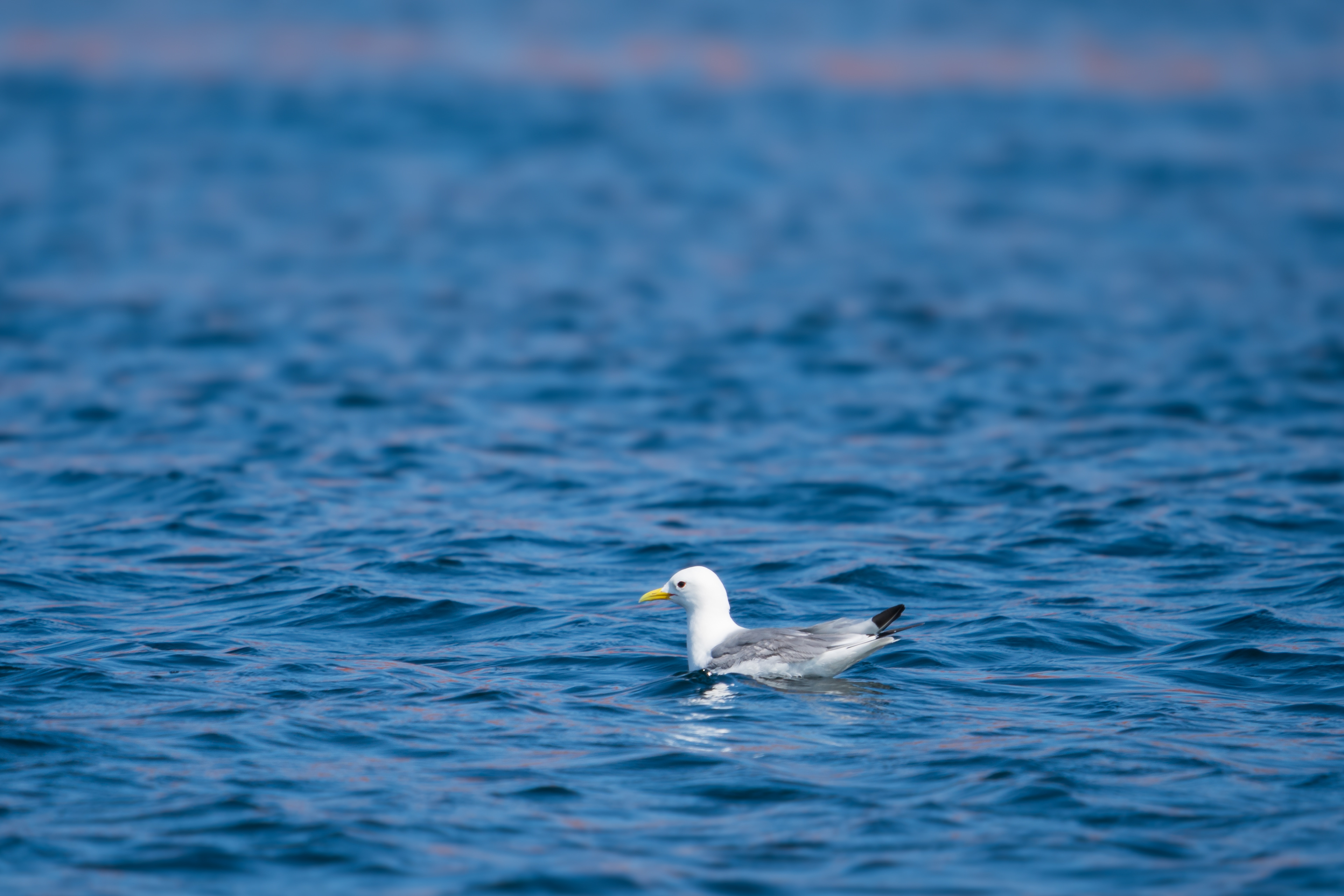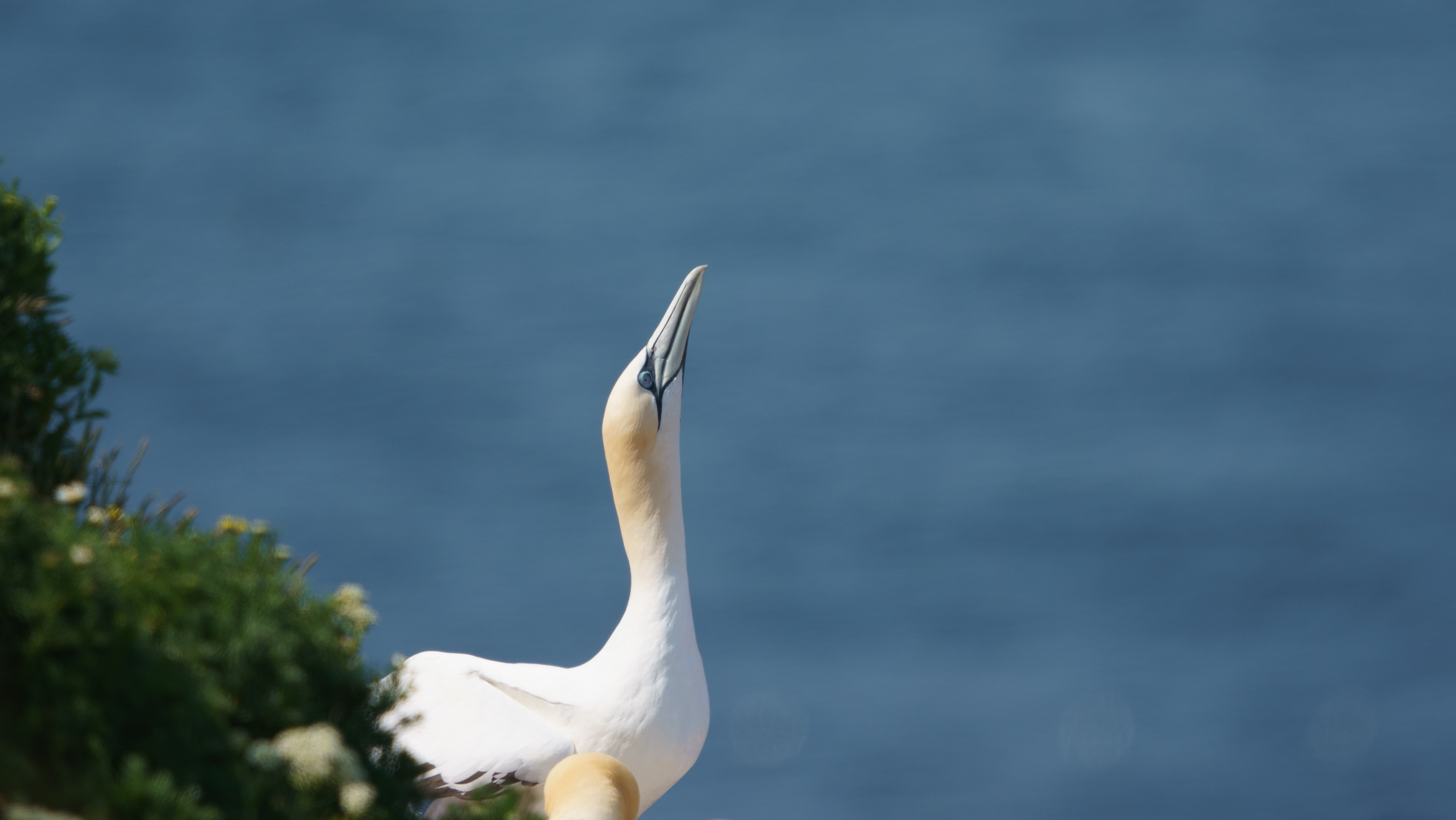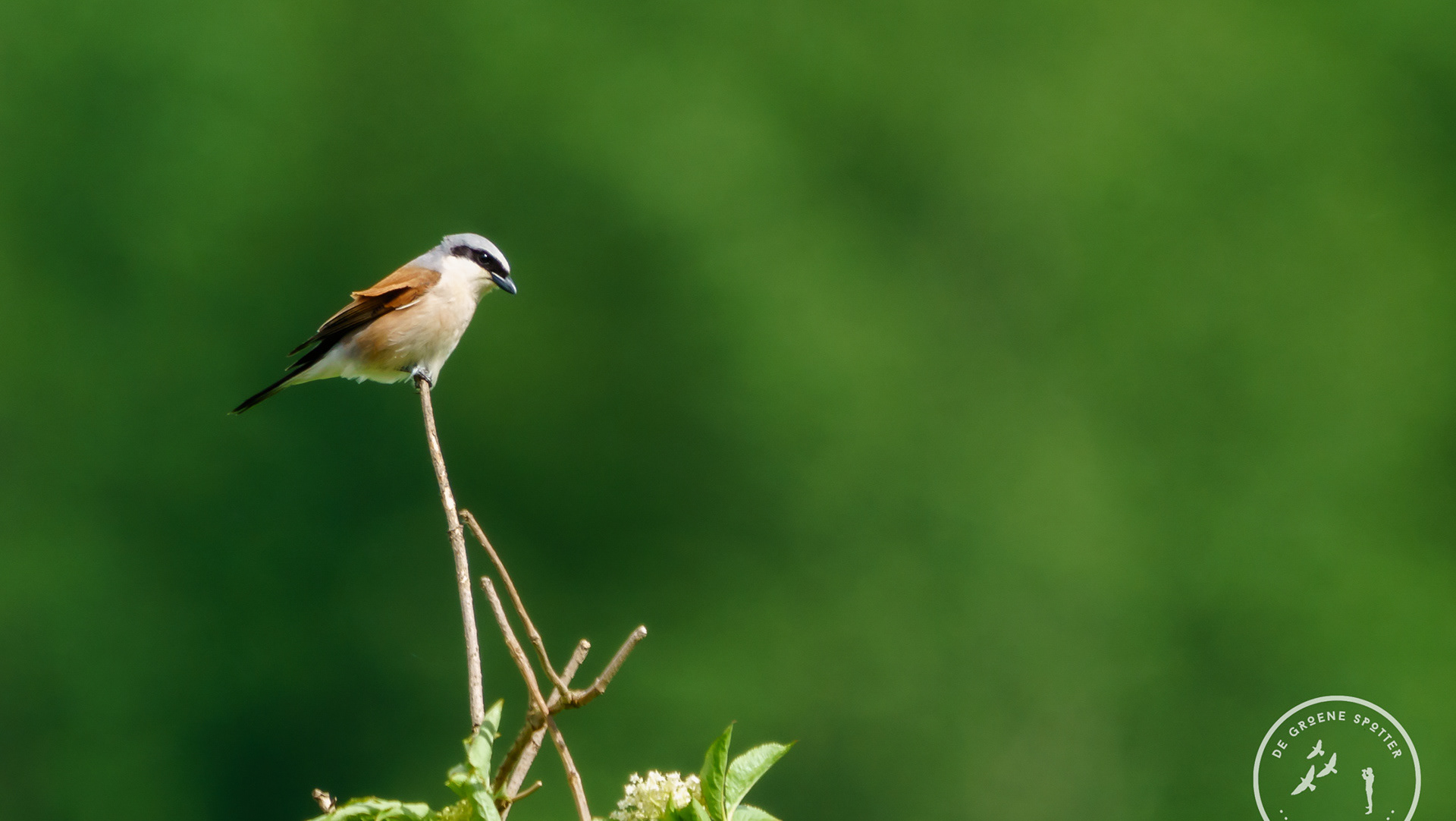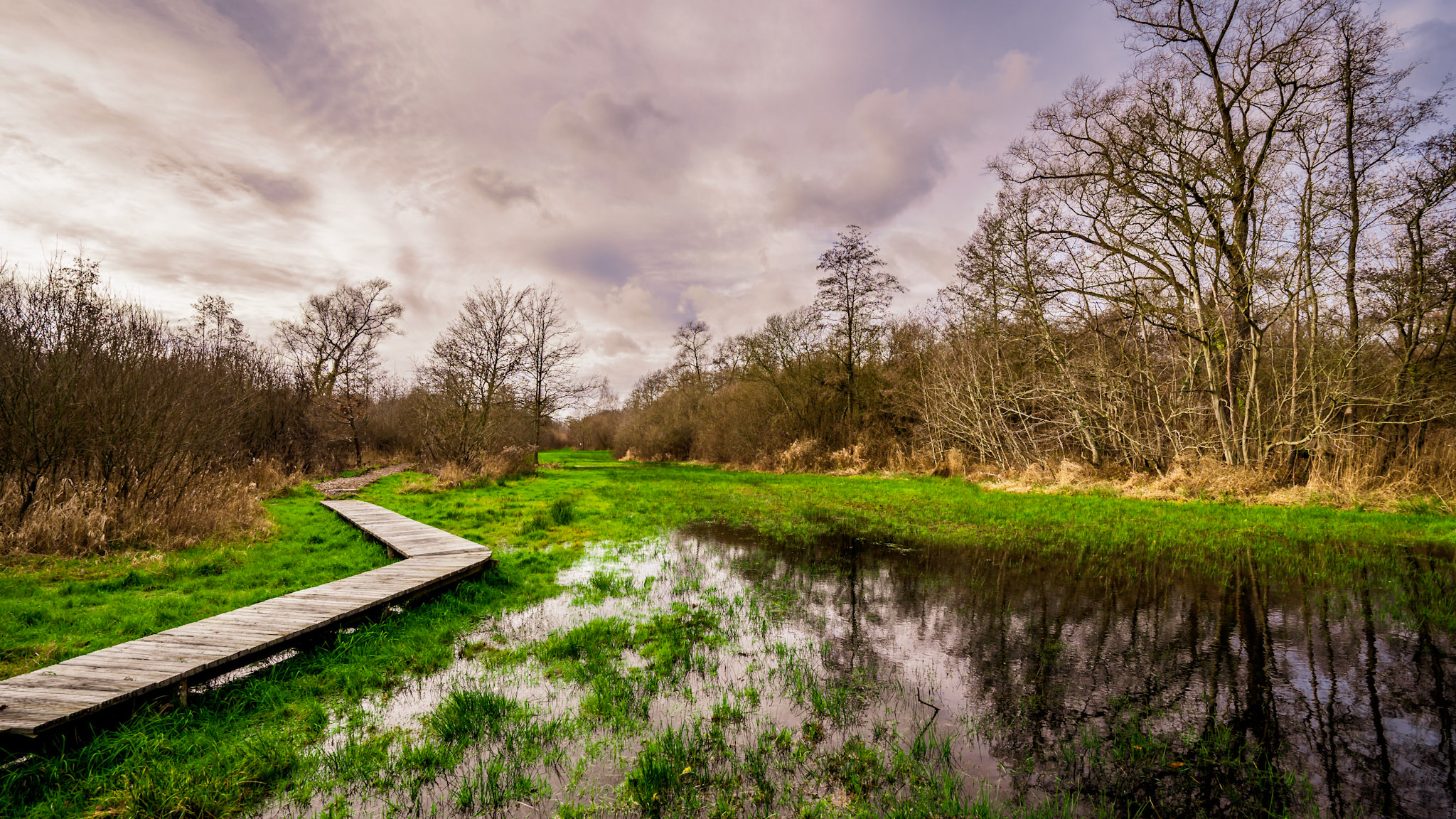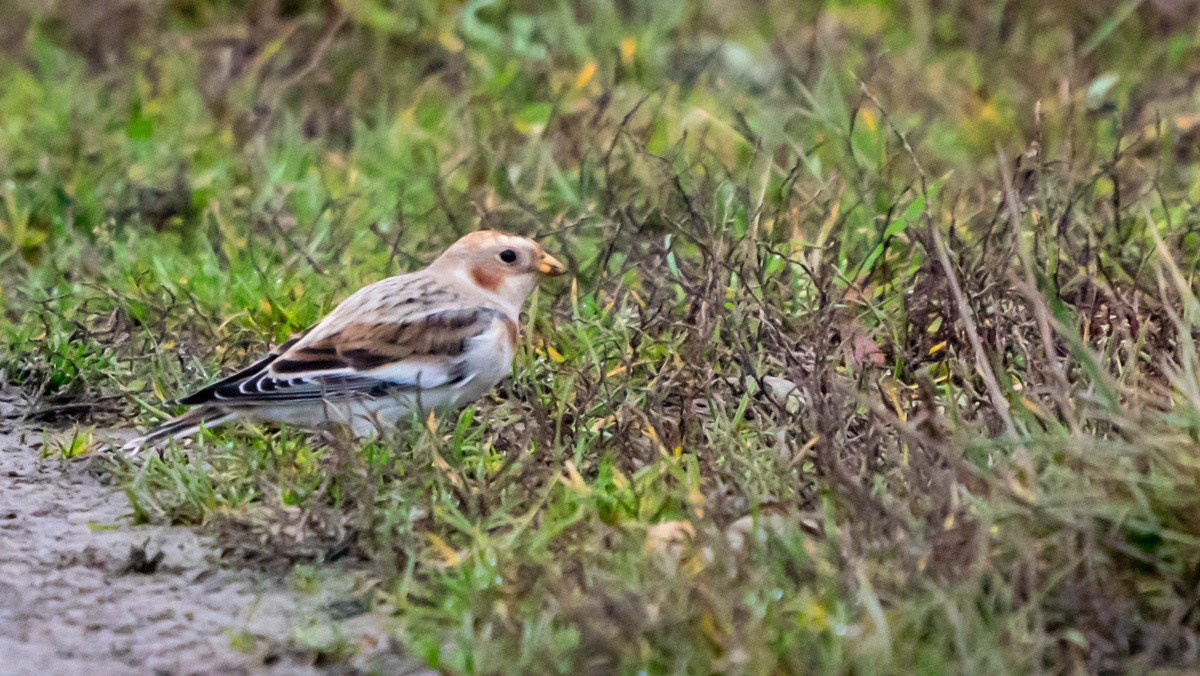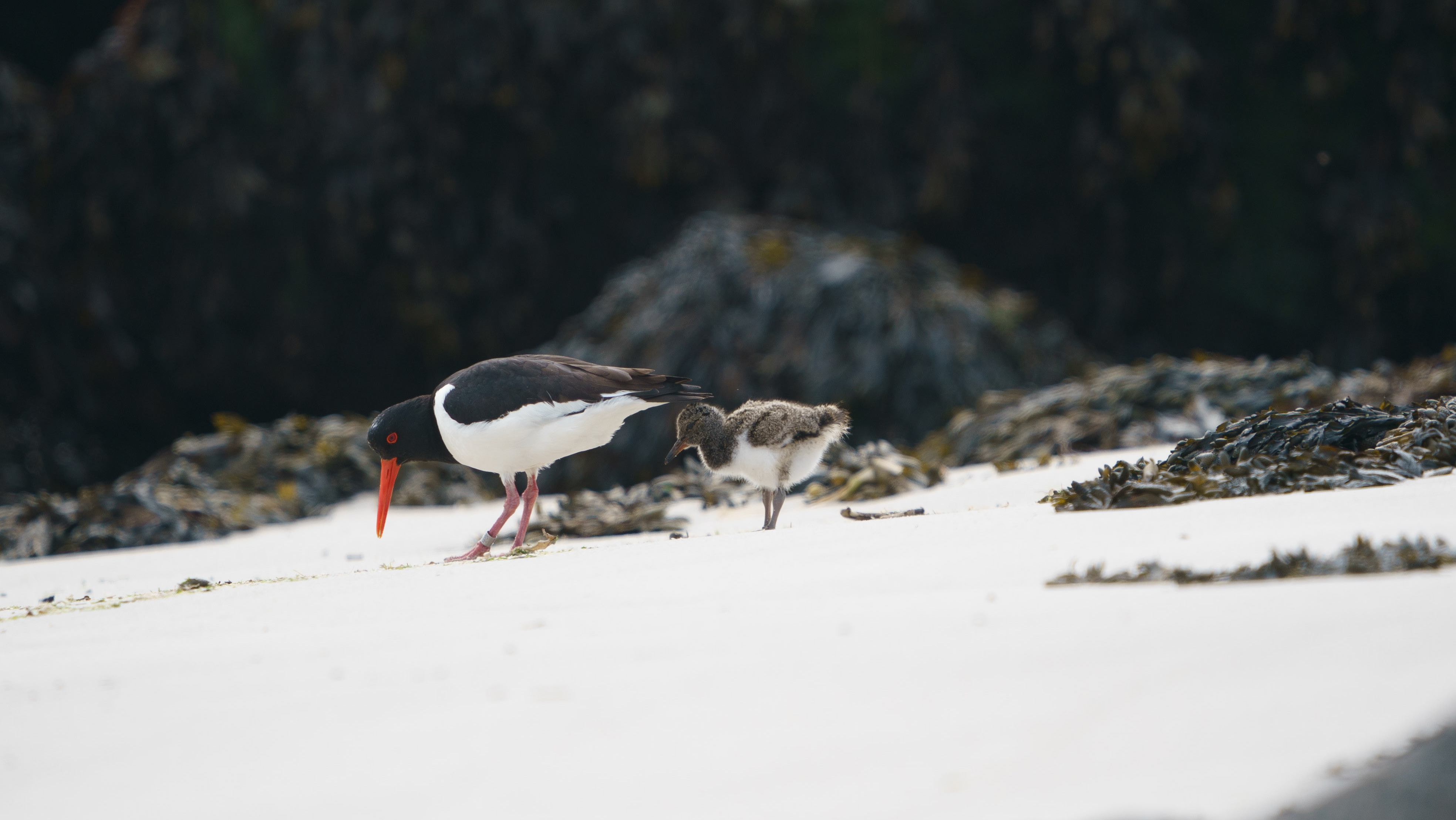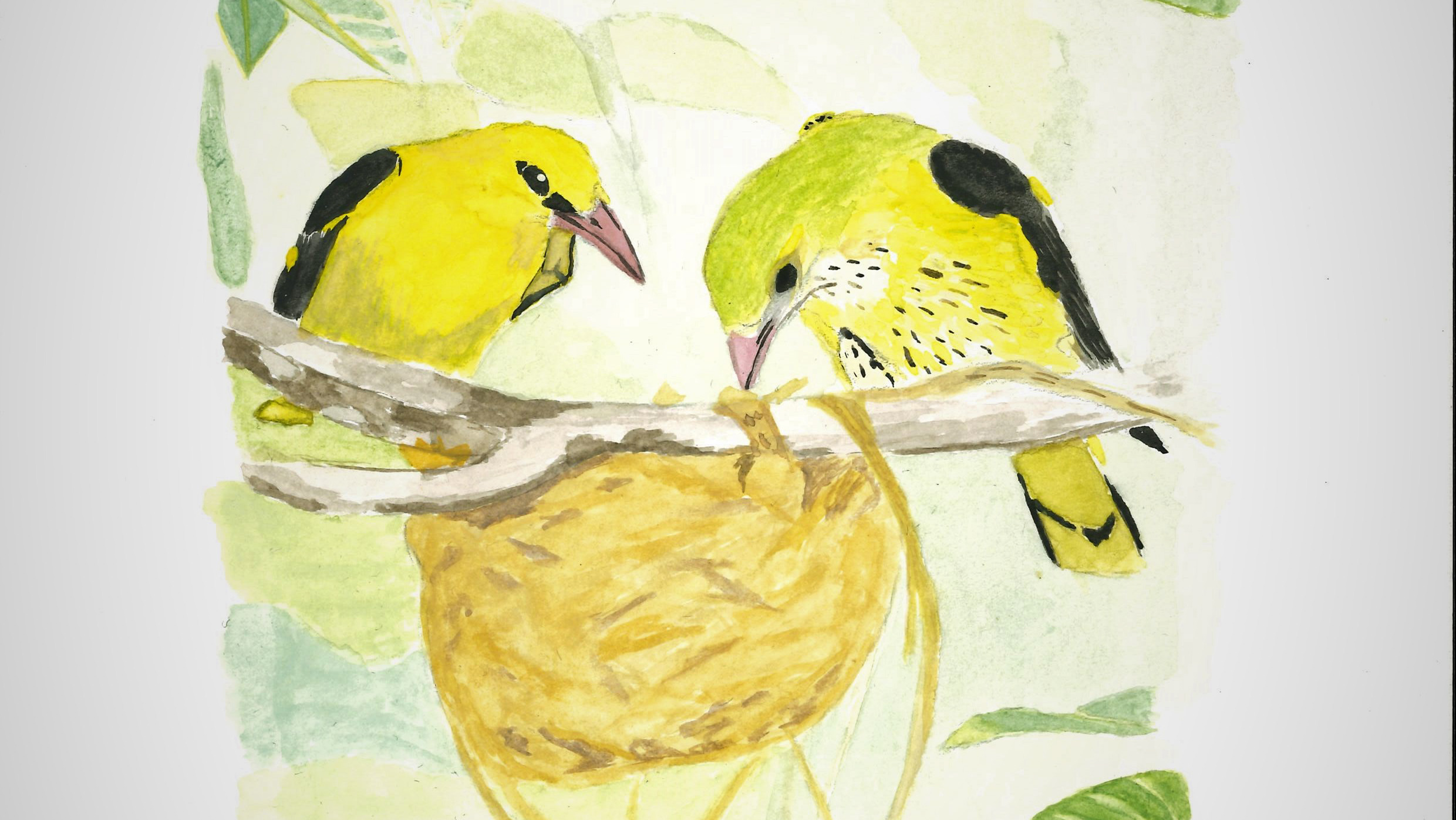Helgoland is an ideal location for those seeking peace and relaxation. Traffic is limited to a few electric taxis. Given the small size of the island, you can basically just do everything on foot.
As an island, it forms an ideal nesting ground for seabirds and mainly Northern Gannets and Common Guillemots.
The number per species easily exceeds a thousand. Northern Gannets like to breed on top of cliffs and you can also approach them at quite a short distance, but are fortunately restricted to the fence.
It goes without saying that you don't try to touch the birds. You can clearly see that they are used to human attention, as they remain quietly nesting on their nests up to a short distance away.
These protected areas are the smallest nature reserves in the world and fall under the "Lummenfelsen" nature reserve. The name refers to the Common Guillemots (German: Trottellummen), which nest on the high steep rock faces (felsen).
The number per species easily exceeds a thousand. Northern Gannets like to breed on top of cliffs and you can also approach them at quite a short distance, but are fortunately restricted to the fence.
It goes without saying that you don't try to touch the birds. You can clearly see that they are used to human attention, as they remain quietly nesting on their nests up to a short distance away.
These protected areas are the smallest nature reserves in the world and fall under the "Lummenfelsen" nature reserve. The name refers to the Common Guillemots (German: Trottellummen), which nest on the high steep rock faces (felsen).
Common Guillemots, Black-legged Kittiwake and Northern Fulmars breed along the narrow edges of the cliffs. Approaching the cliffs along the Klippenrandweg, you can already see the Gannets flying over from a distance with or without nesting material.
It is a fun spectacle. In early June, the gannets are fully engaged in incubating and raising their first clutch of eggs and they also keep diligently replenishing the nests with extra nesting material.
Here you do get confronted with the waste coming from the sea. What humans throw away or lose in the sea, the birds use as nesting material. This then comes back double when you notice a dead bird along the cliffs, entangled in a net. There is beauty, vibrant life, but also death. Be it natural or at the hands of man. We cannot ignore it.
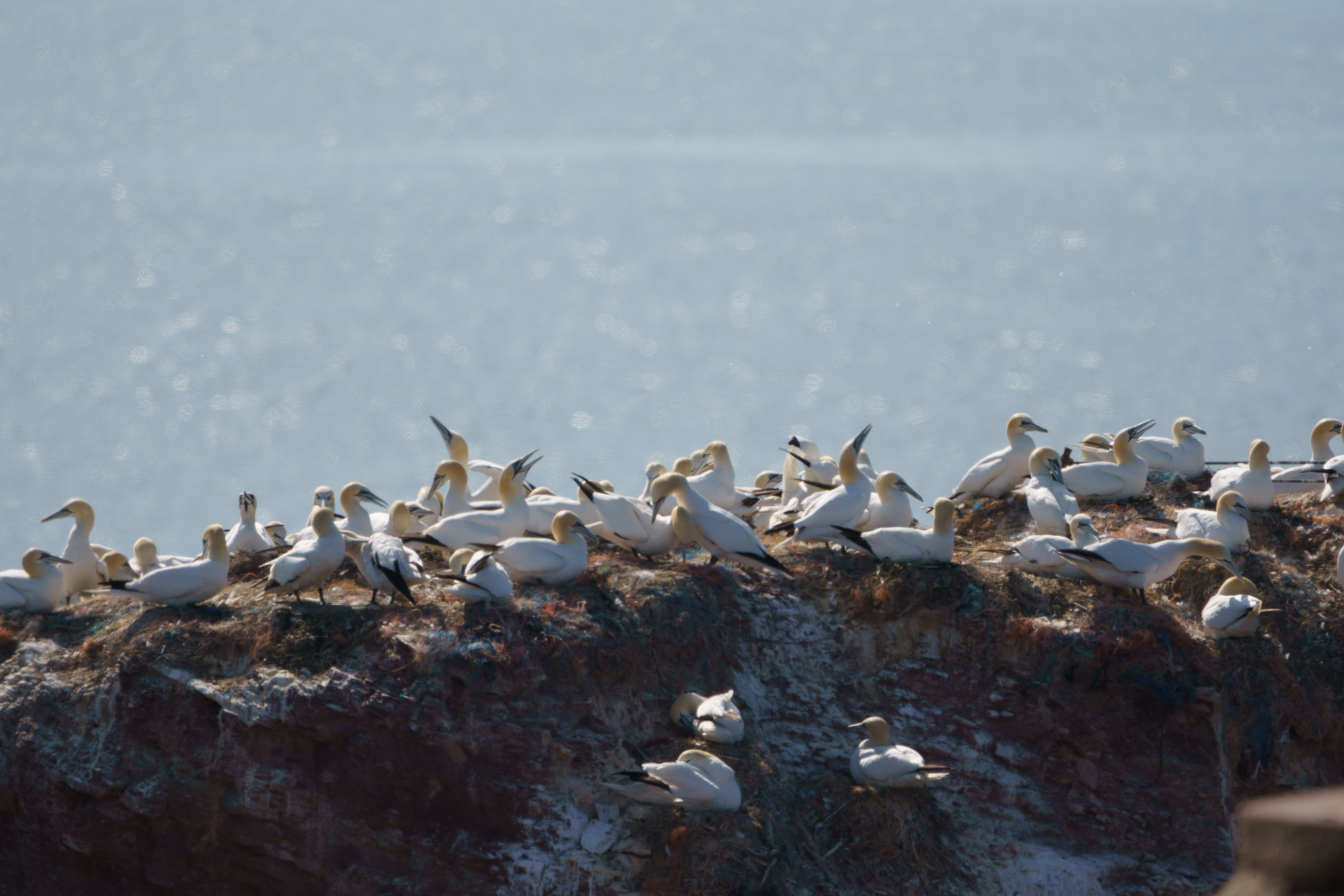

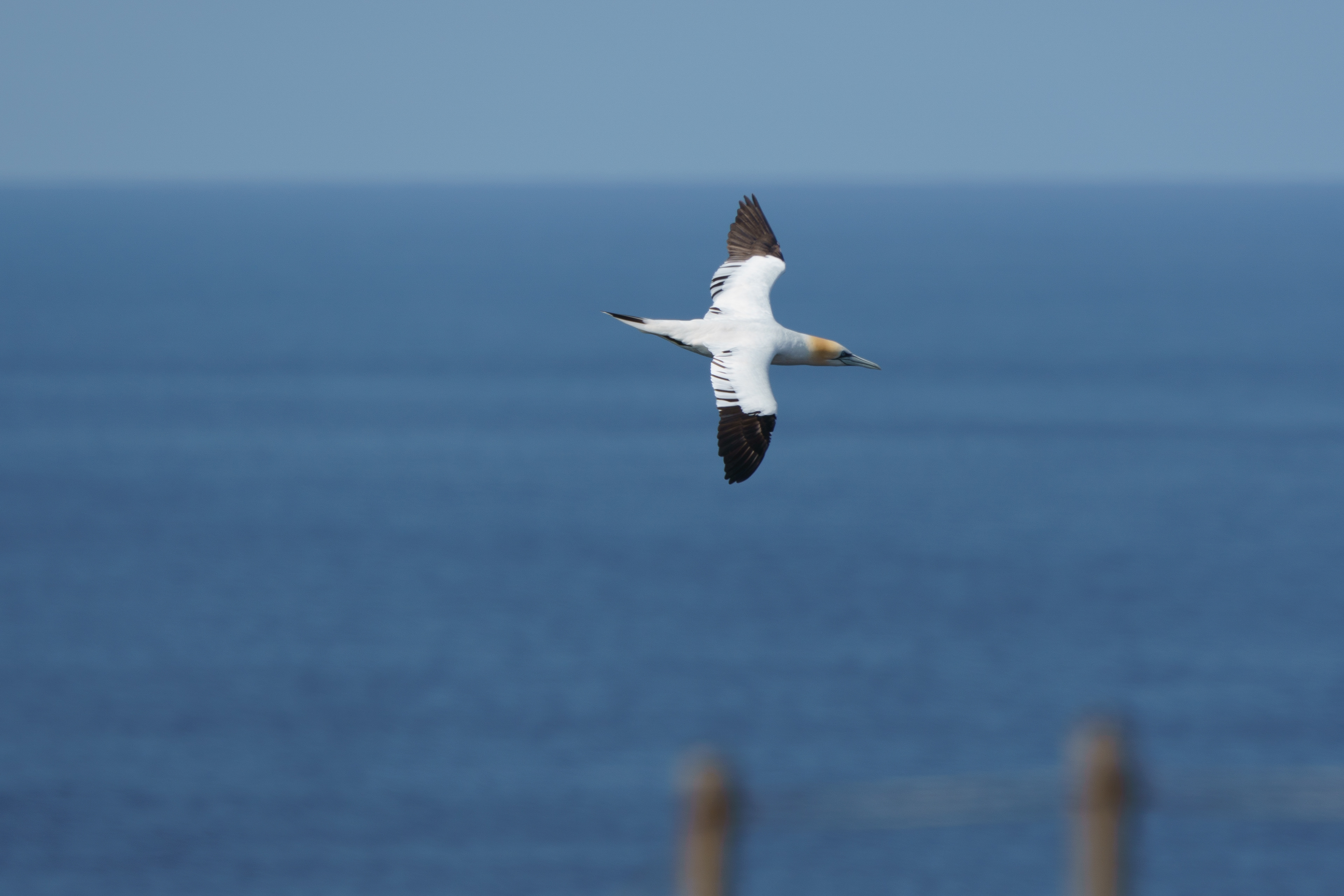
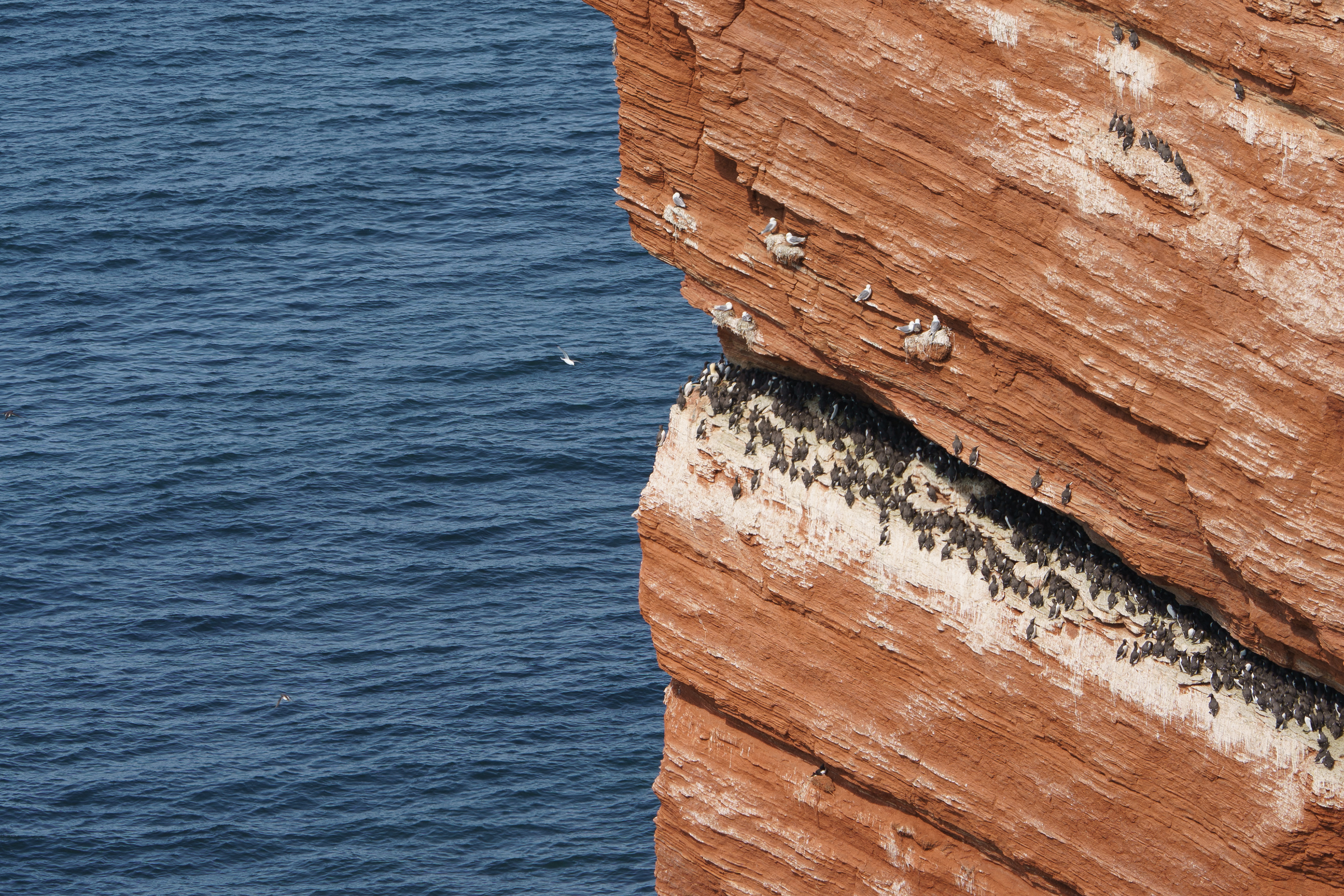
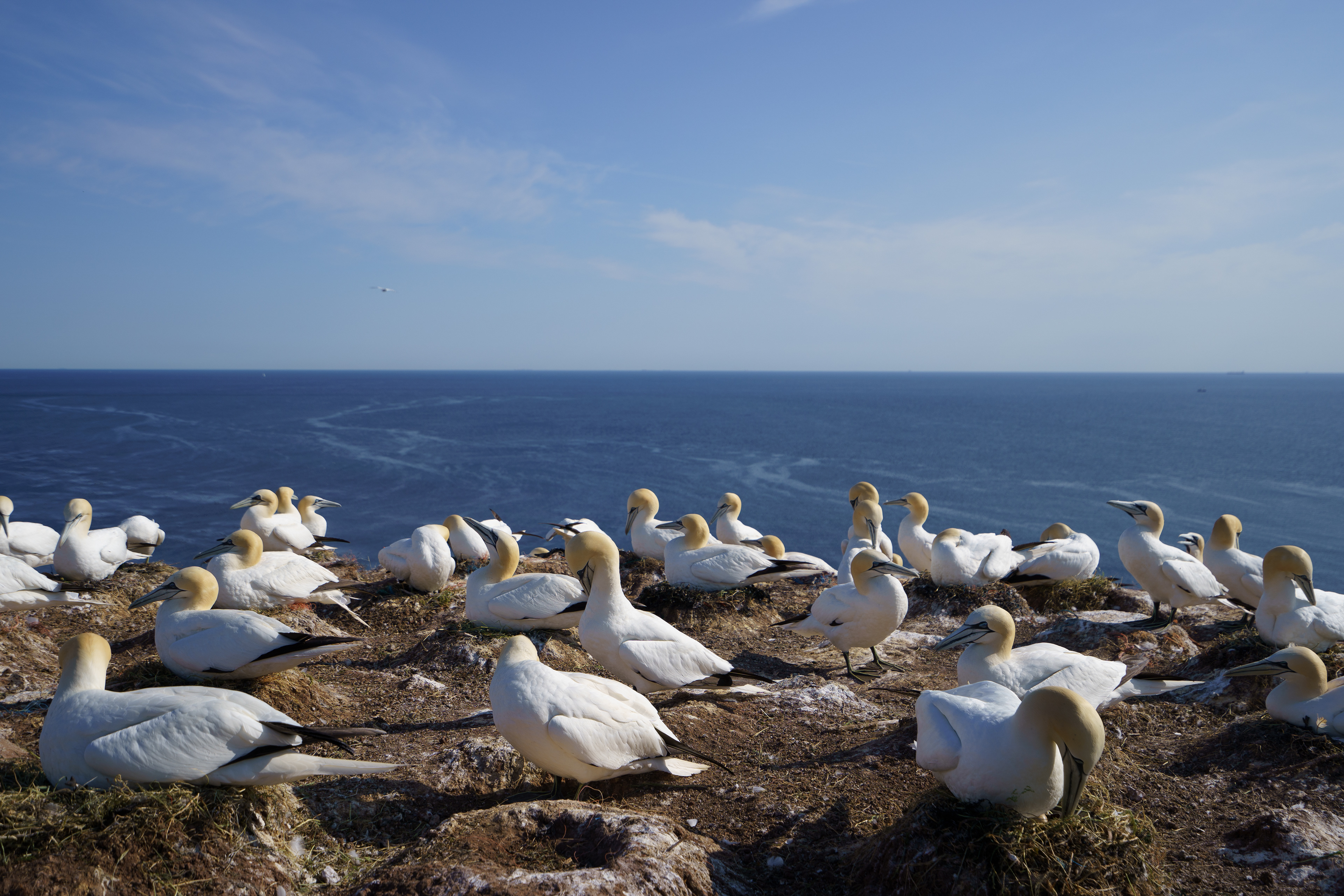
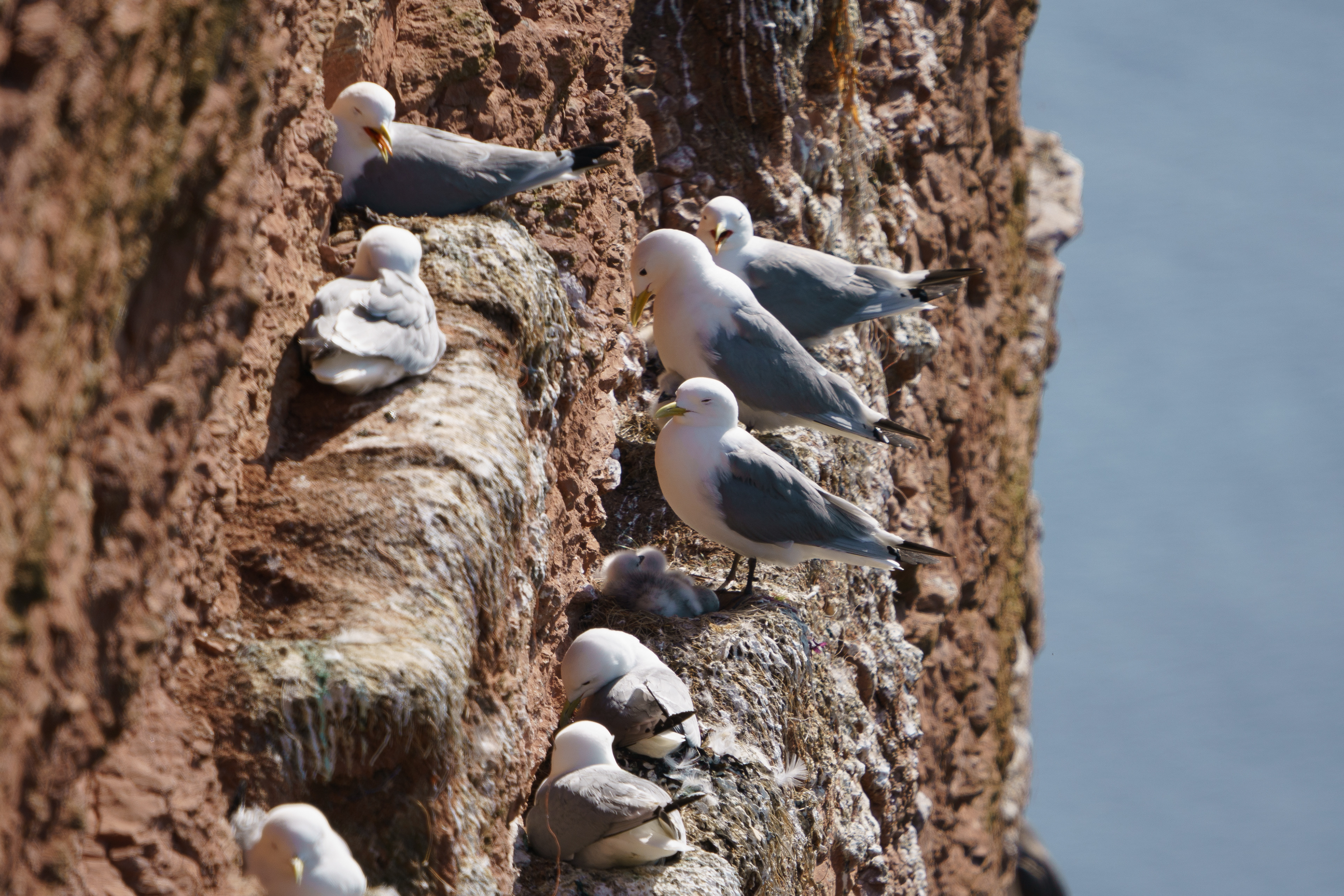
Northern Gannet (Morus bassamus)
The white streamlined slender seabirds with long narrow wings and black wingtips (primartials) are unmistakable. It is only during the breeding season that the golden yellow head is at its brightest in colour. Looking at the head up close, one cannot help but fall in love with this beautiful combination of expressive eyes with black pen marks on the head.
The breeding sites are approachable to a short distance, but of course require the necessary respect on our part.
The breeding sites are approachable to a short distance, but of course require the necessary respect on our part.
When gannets are fully engaged in incubating the egg, they hold it firmly with their strong, large black flipper legs. They keep the brown-speckled egg warm and also prevent the egg from rolling away from the cliff. The breeding season usually starts from May, with only one egg laying. They do reuse the nest, which grows considerably with material from the sea after a few years.
The chicks are completely grey and are ready to fly only after 90 days of patience on the nest. Those who visit in July will see the chicks in their grey-brown plumage. Only after four years, the grey-brown juveniles are completely white.
At sea, these white-streamed birds are rather silent, but you will hear their loud and raucous sounds all the louder echoing from the rocks.
That is where they prefer to make noise to gain a foothold on their small nesting grounds. It is a very nice spectacle to observe their different behaviours interchangeably: caring for the egg, greeting the partner, applying nesting material, flying out in search of food, chasing away intruders...
The chicks are completely grey and are ready to fly only after 90 days of patience on the nest. Those who visit in July will see the chicks in their grey-brown plumage. Only after four years, the grey-brown juveniles are completely white.
At sea, these white-streamed birds are rather silent, but you will hear their loud and raucous sounds all the louder echoing from the rocks.
That is where they prefer to make noise to gain a foothold on their small nesting grounds. It is a very nice spectacle to observe their different behaviours interchangeably: caring for the egg, greeting the partner, applying nesting material, flying out in search of food, chasing away intruders...
Life as it is on Helgoland !
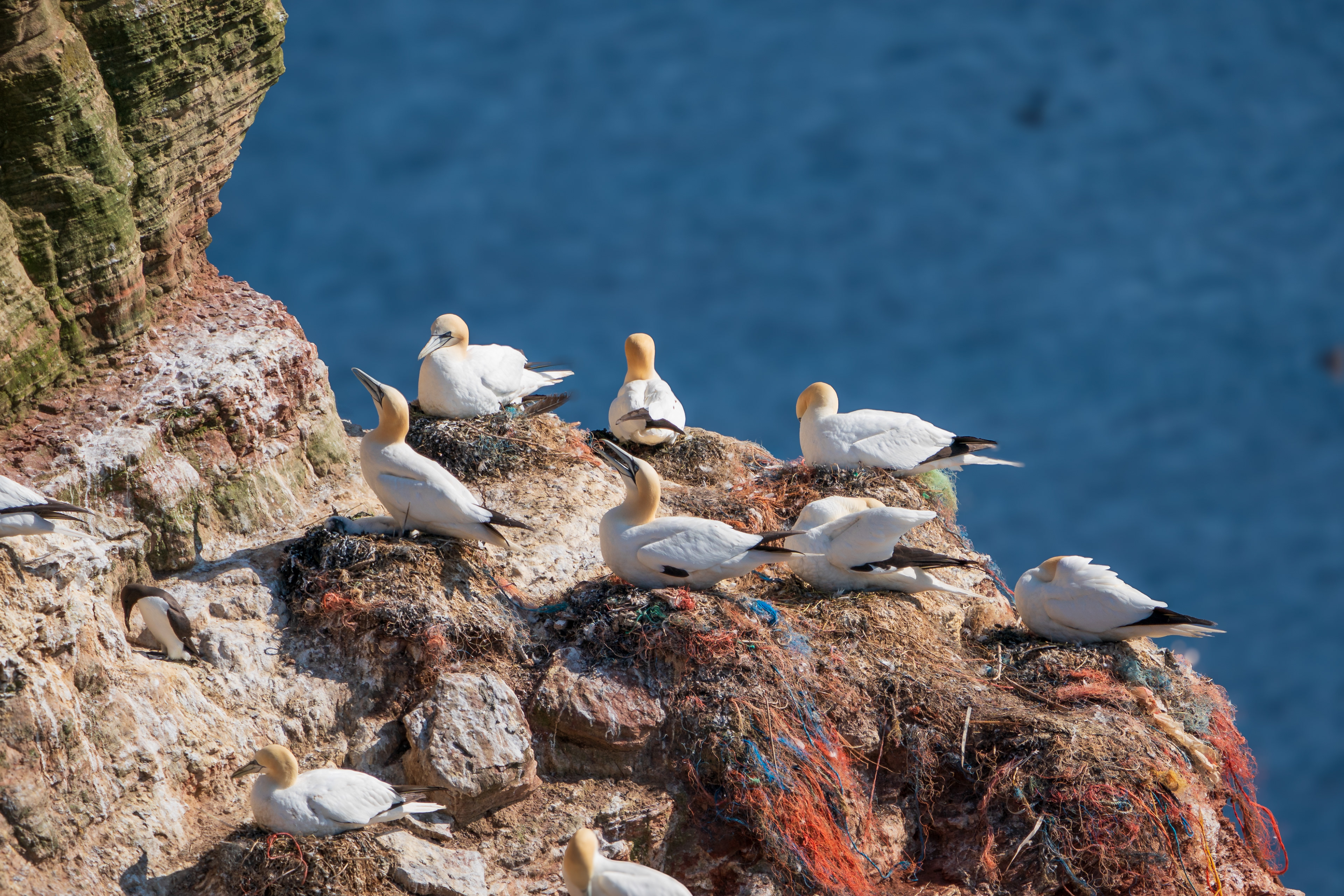
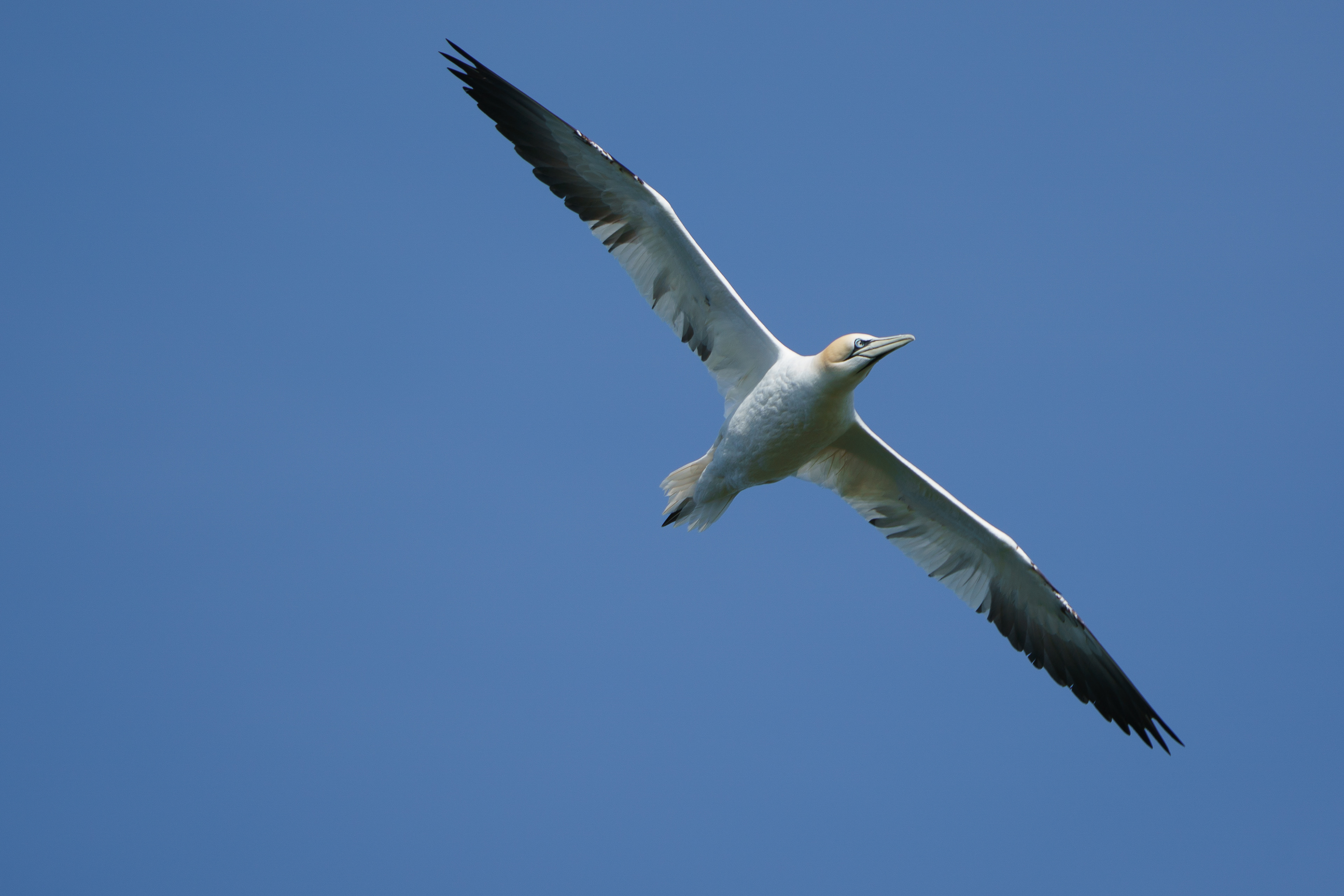
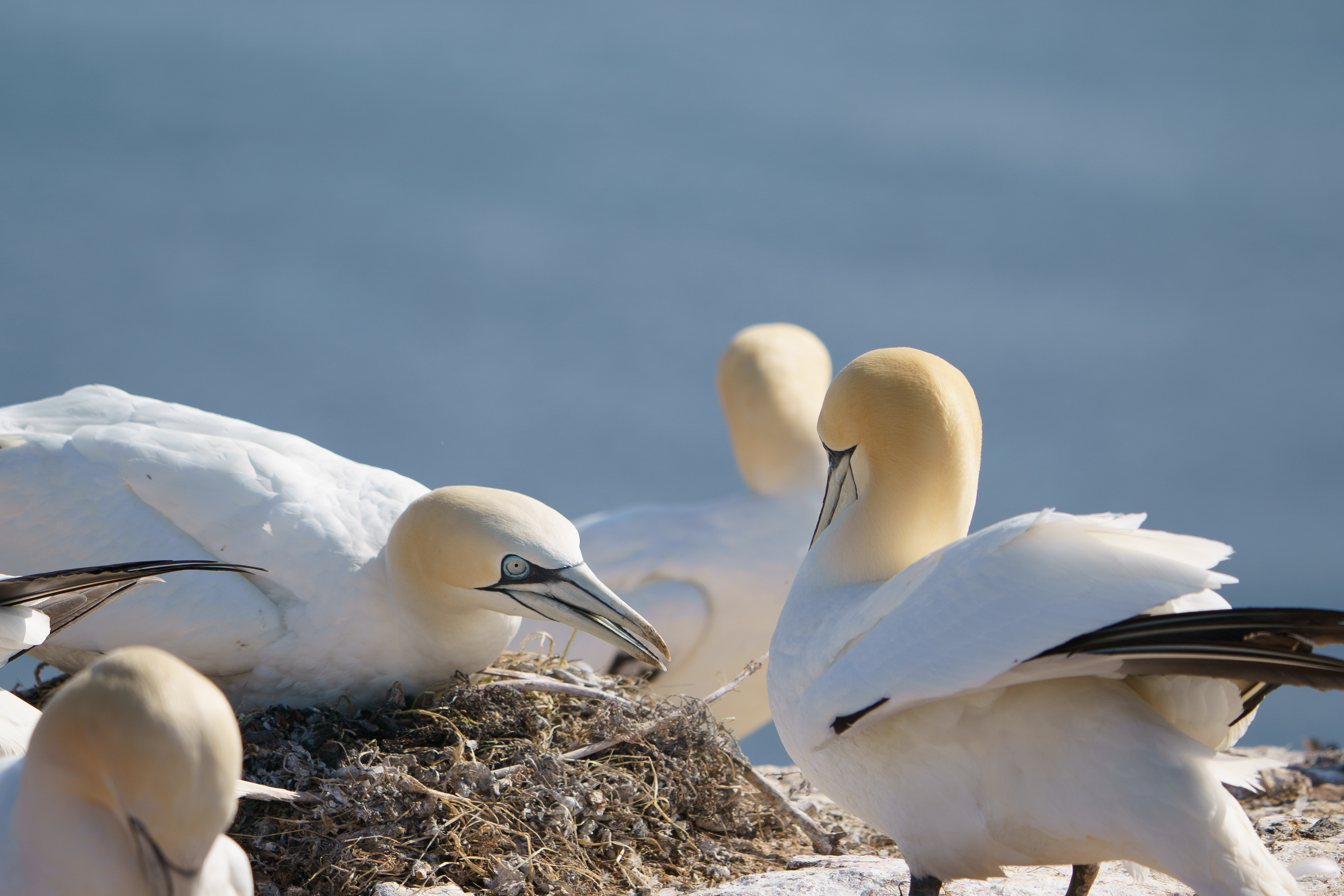
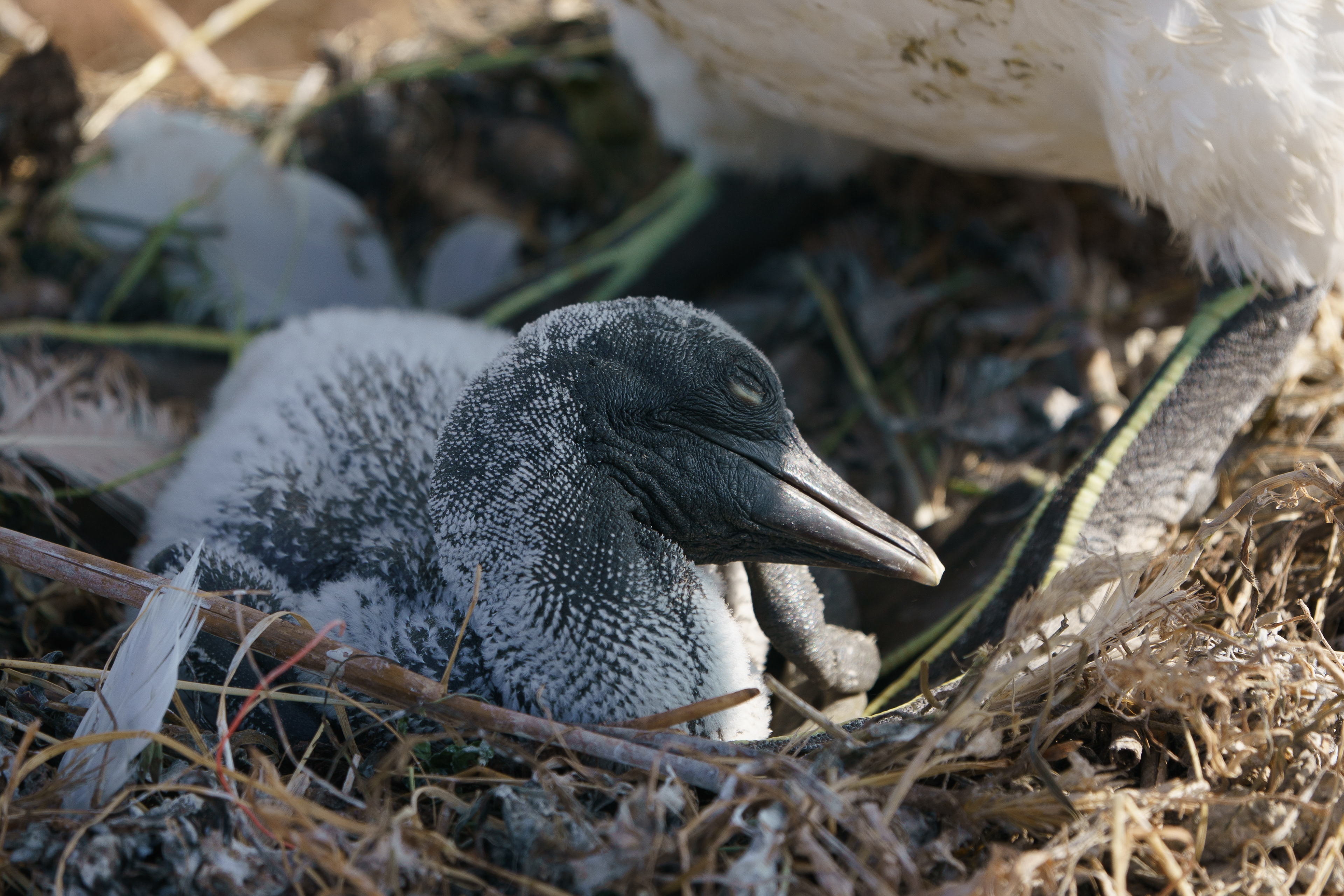
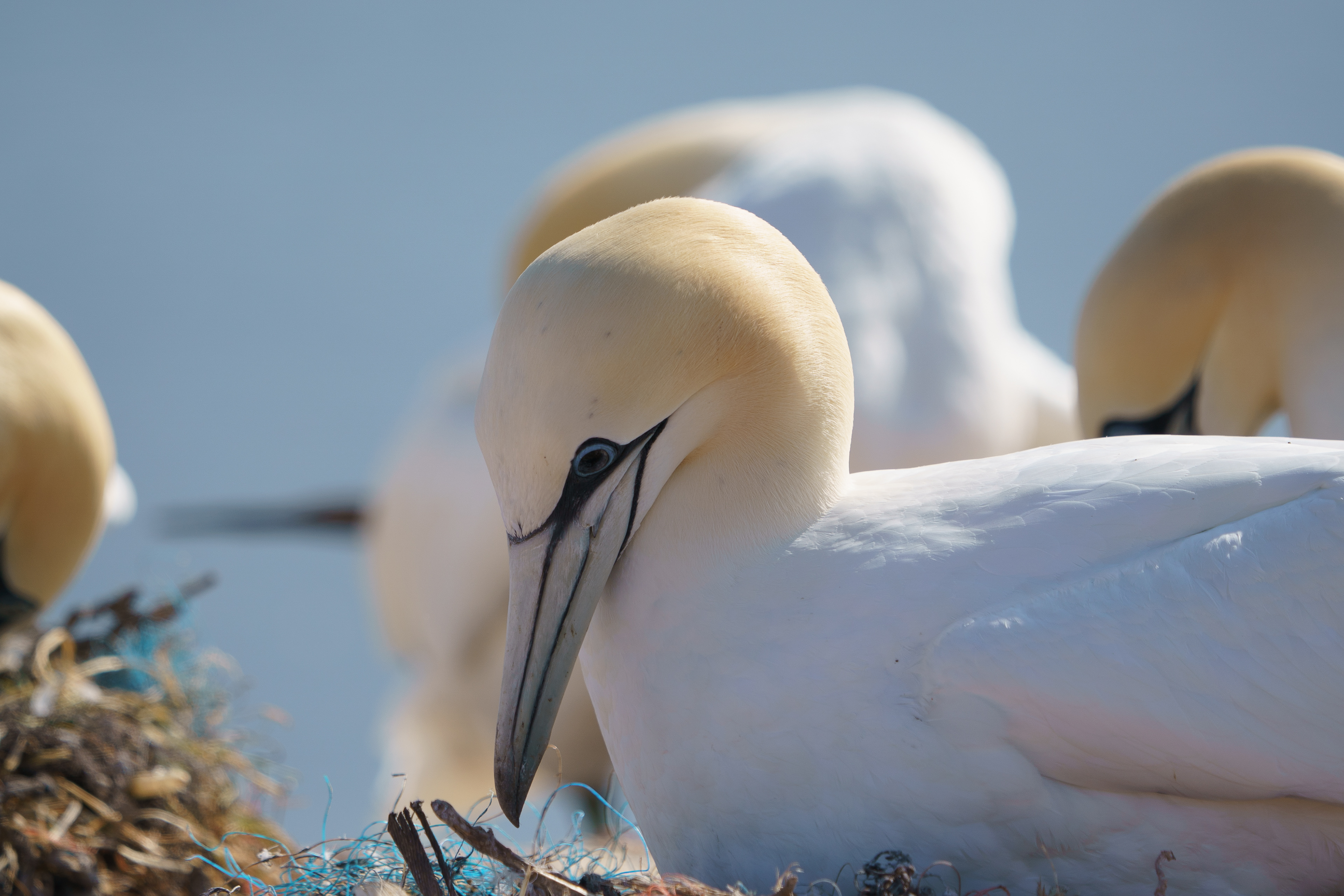
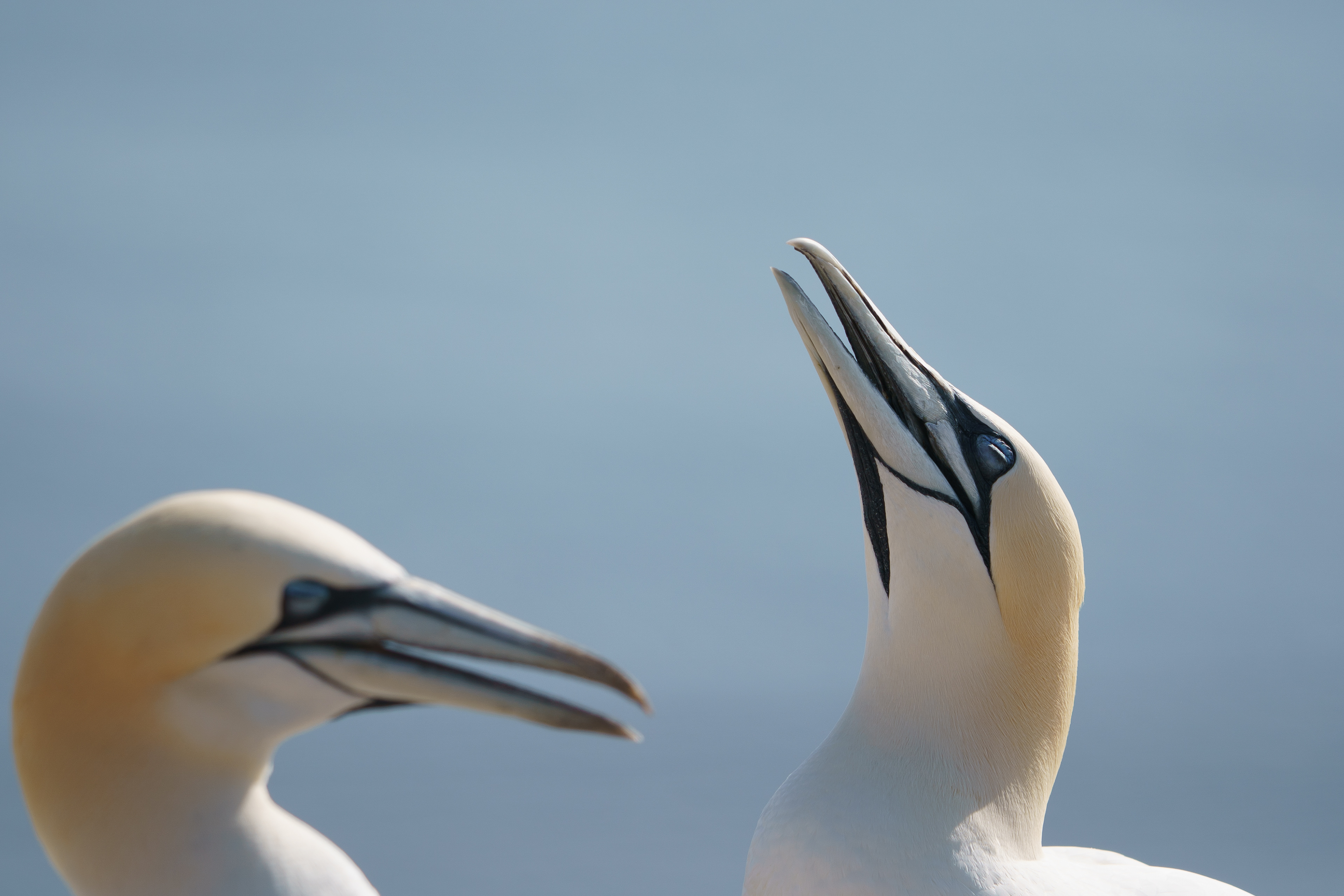

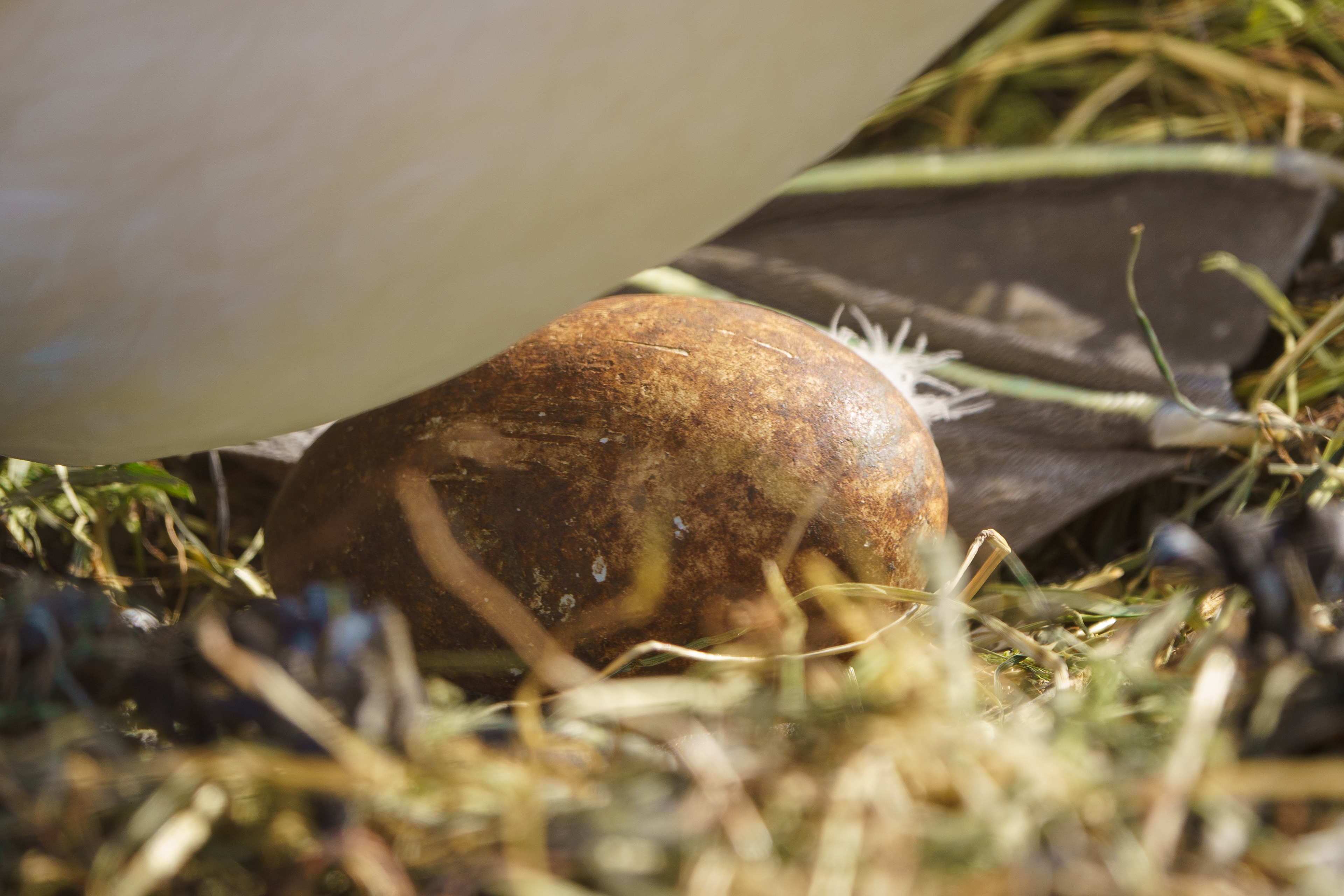

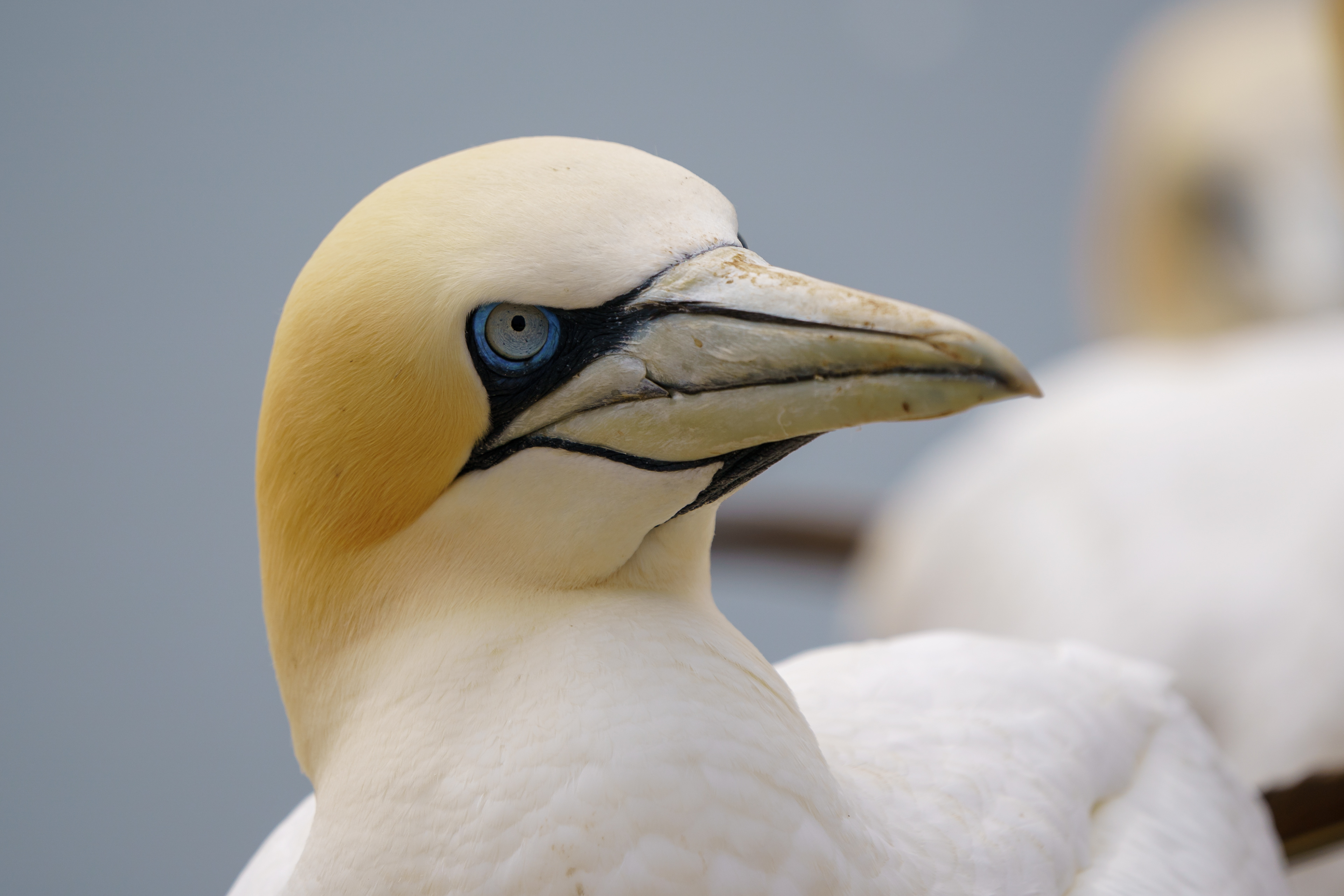
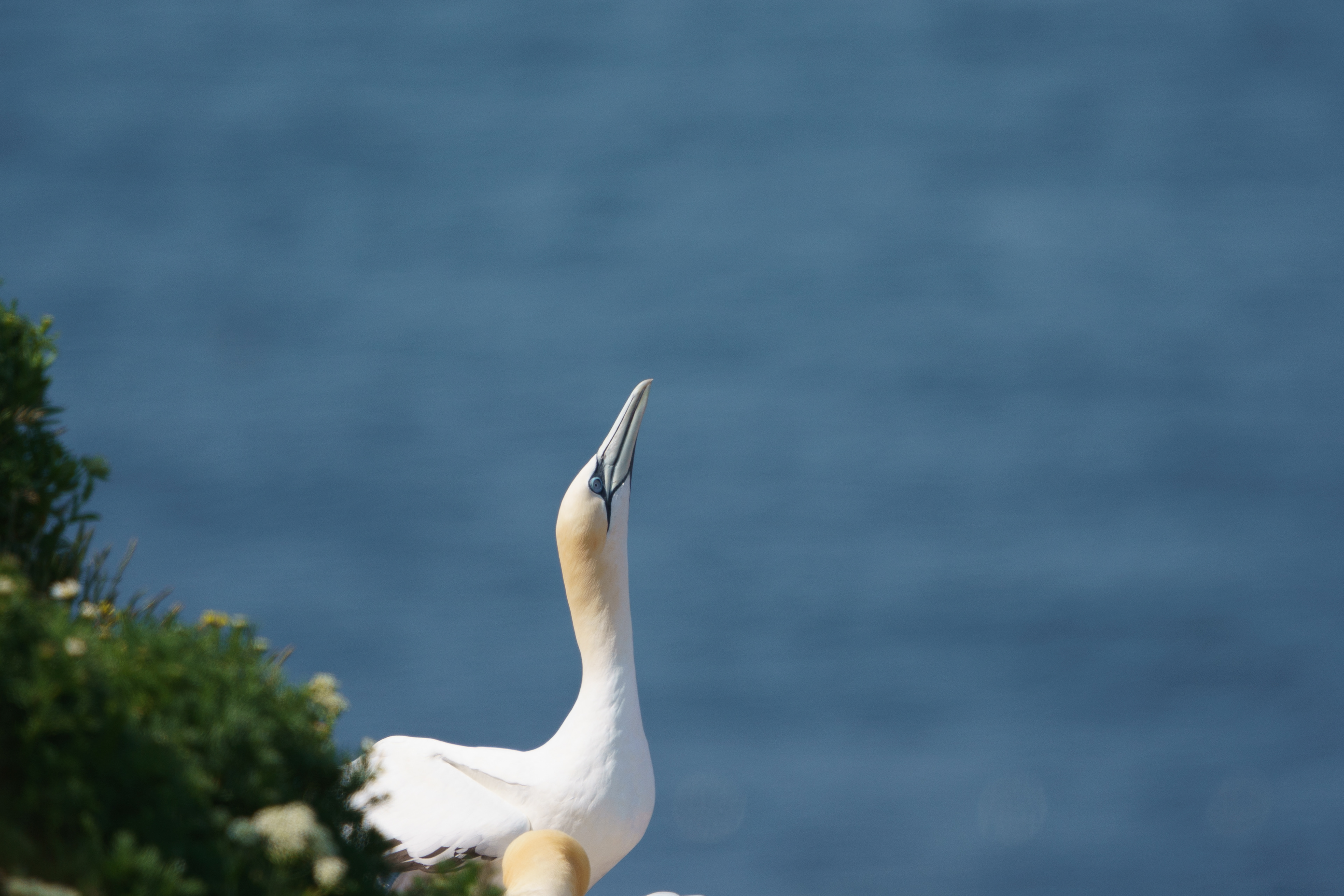
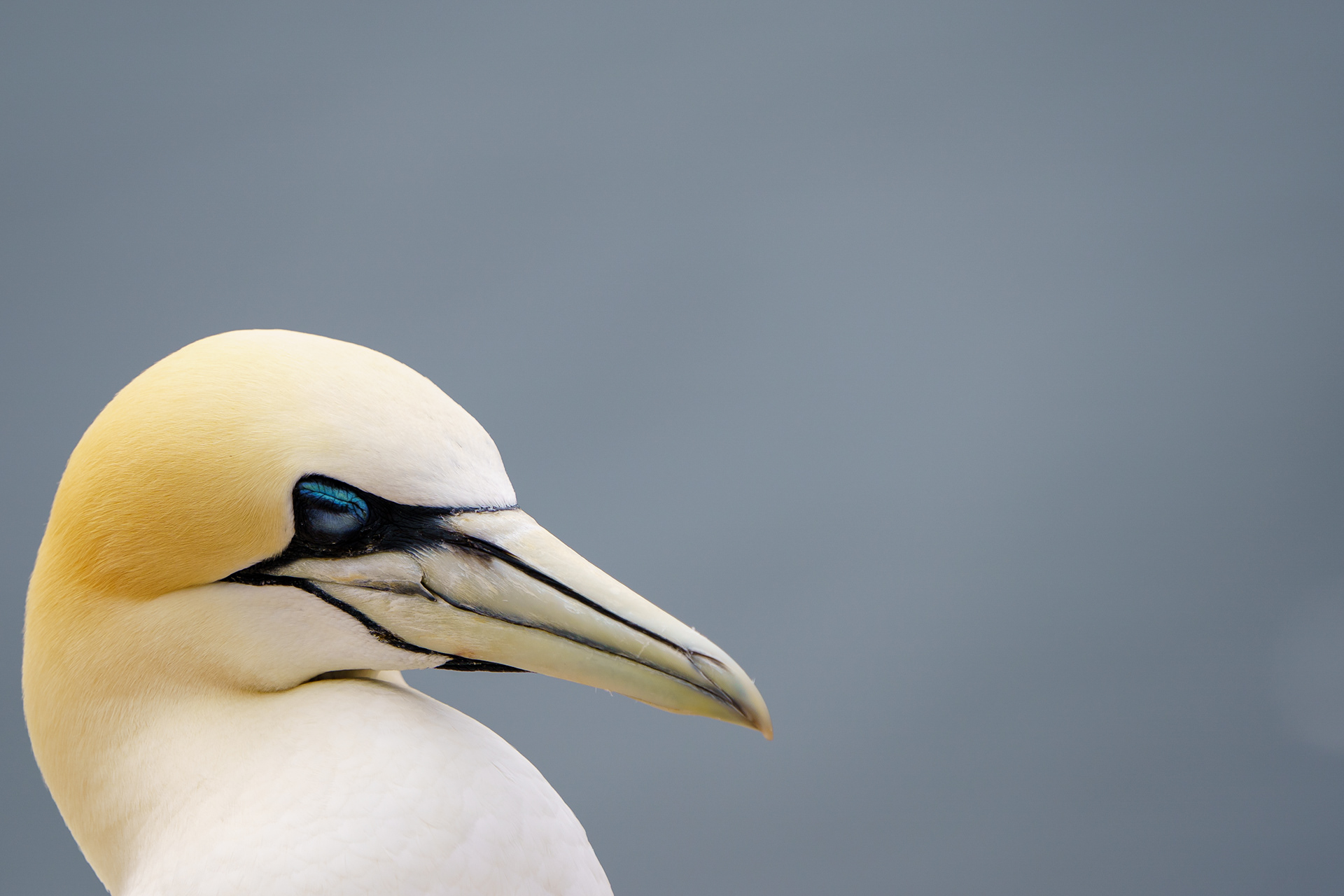
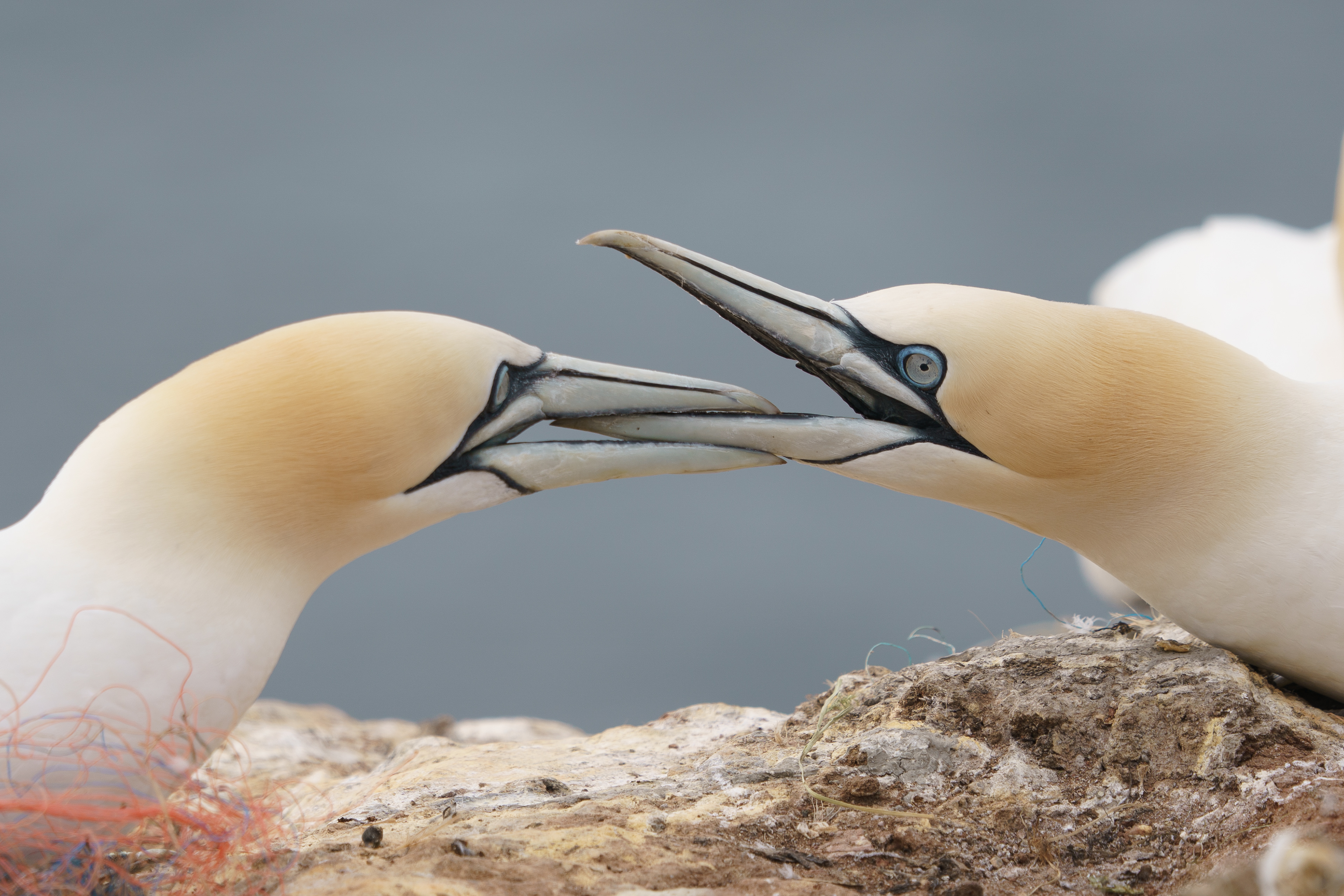

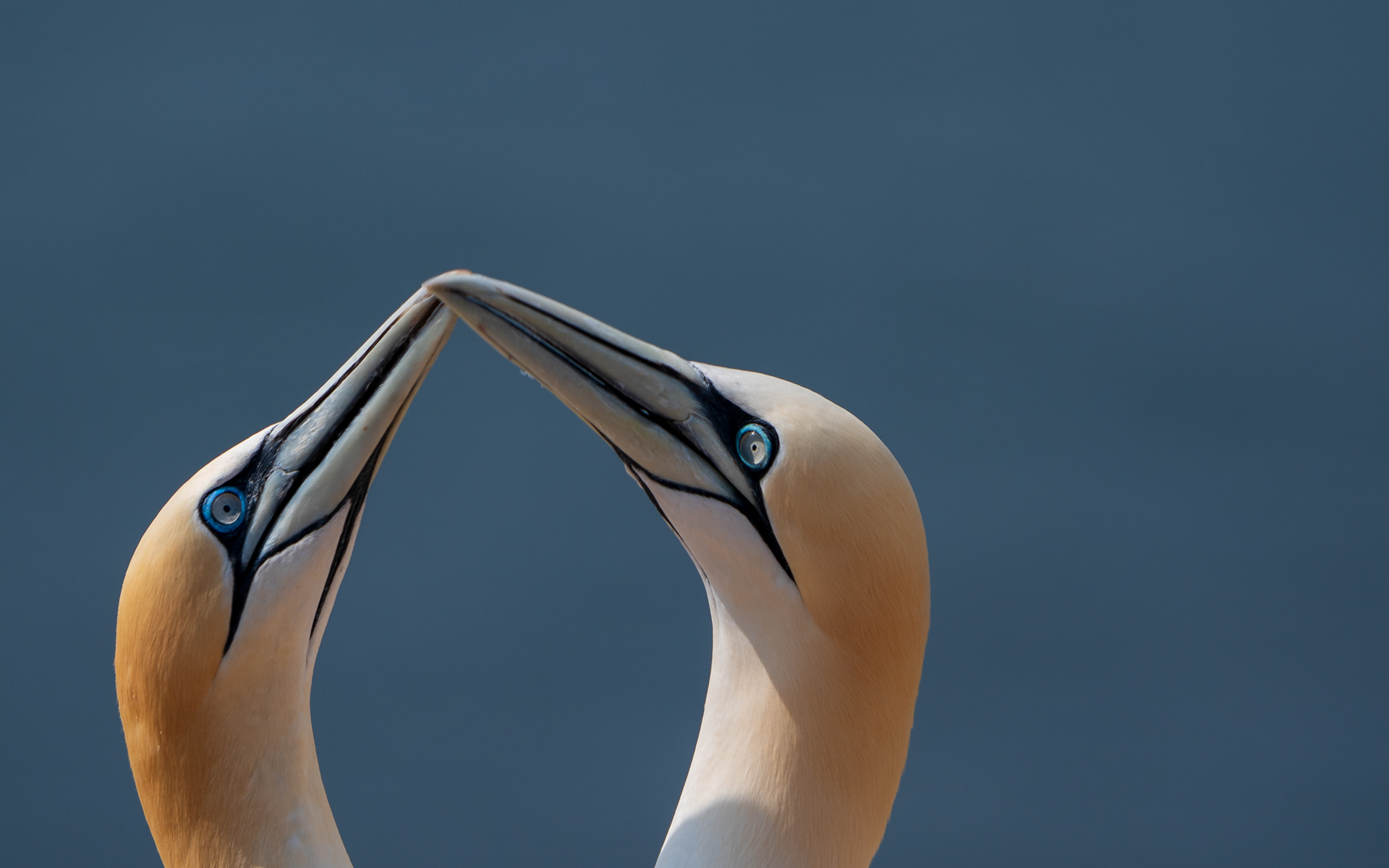
Razorbills (Alca torda) en Common Guillemots (Uria aalge)
At first glance, the seabirds the Razorbill and the Guillemot, look much like a small penguin. It is therefore no coincidence that the French name for Razorbill is "le petit pingouin".
The differences between the two species are best observed on this island. The Razorbill because of its beak and the Guillemot because of its posture and shape. They fly at high speed just above a water surface and are therefore difficult to distinguish when viewed from a distance.
Razorbills and Guillemots, like the Gannets, are colony birds and nest on the narrow ledges of rocks. These two species also lay only 1 egg during the breeding season.
A major distinction between the two species is the beak. In Razorbills, it is more angular, while a Guillemot has a pointed beak.
Another distinction between the 2 species is the colour of plumage. Razorbills have a black back and head, while Guillemots are more chocolate brown.
Razorbills and Guillemots, like the Gannets, are colony birds and nest on the narrow ledges of rocks. These two species also lay only 1 egg during the breeding season.
A major distinction between the two species is the beak. In Razorbills, it is more angular, while a Guillemot has a pointed beak.
Another distinction between the 2 species is the colour of plumage. Razorbills have a black back and head, while Guillemots are more chocolate brown.
Razorbills are much rarer in number along the North Sea coast than Guillemots. On Heligoland, you can easily spot a thousand or so Guillemots, while Razorbills are quite outnumbered by 500 or so.
Razorbills are therefore on the Red List (IUCN) as "Near Threatened".
Razorbills are therefore on the Red List (IUCN) as "Near Threatened".
“Know what you're watching”
As we admired the Guillemots and Razorbills along the cliffs, some ladies nearby were photographing nesting Guillemots. Suddenly, one of the ladies called out, "I have a Spectacled Guillemot in view".
My ears pricked up immediately on hearing this species of bird. "Oh dear...?", I thought to myself. The other two ladies came over to admire the rare bird with great enthusiasm. Naturally, I had to take a closer look at that one too.
After she pointed out the so-called Spectacled Guillemot, I had to disappoint her and explain that it was a Guillemot in adult summer plumage. These species of guillemots come from slightly further north and in their summer plumage they have a white fine line around the eye, like spectacles.
My ears pricked up immediately on hearing this species of bird. "Oh dear...?", I thought to myself. The other two ladies came over to admire the rare bird with great enthusiasm. Naturally, I had to take a closer look at that one too.
After she pointed out the so-called Spectacled Guillemot, I had to disappoint her and explain that it was a Guillemot in adult summer plumage. These species of guillemots come from slightly further north and in their summer plumage they have a white fine line around the eye, like spectacles.
So the confusion with a Spectacled Guillemot (Cepphus carbo) was not surprising. But... the Spectacled Guillemot is found on northeastern coasts of Asia (Russia, North Korea and Japan).
The Dutch ladies were a bit disappointed that a young Belgian minimised their "rare" guillemot to a subspecies, but right is right.
As an amateur nature photographer, I think it is important to know what you are looking at or what you want to photograph. If you have no idea what you are looking at, there are enough sources of information these days to arrive at the correct info. After all, that's the best thing about birding. To err is human, but it is more important to learn from the mistakes.
As an amateur nature photographer, I think it is important to know what you are looking at or what you want to photograph. If you have no idea what you are looking at, there are enough sources of information these days to arrive at the correct info. After all, that's the best thing about birding. To err is human, but it is more important to learn from the mistakes.
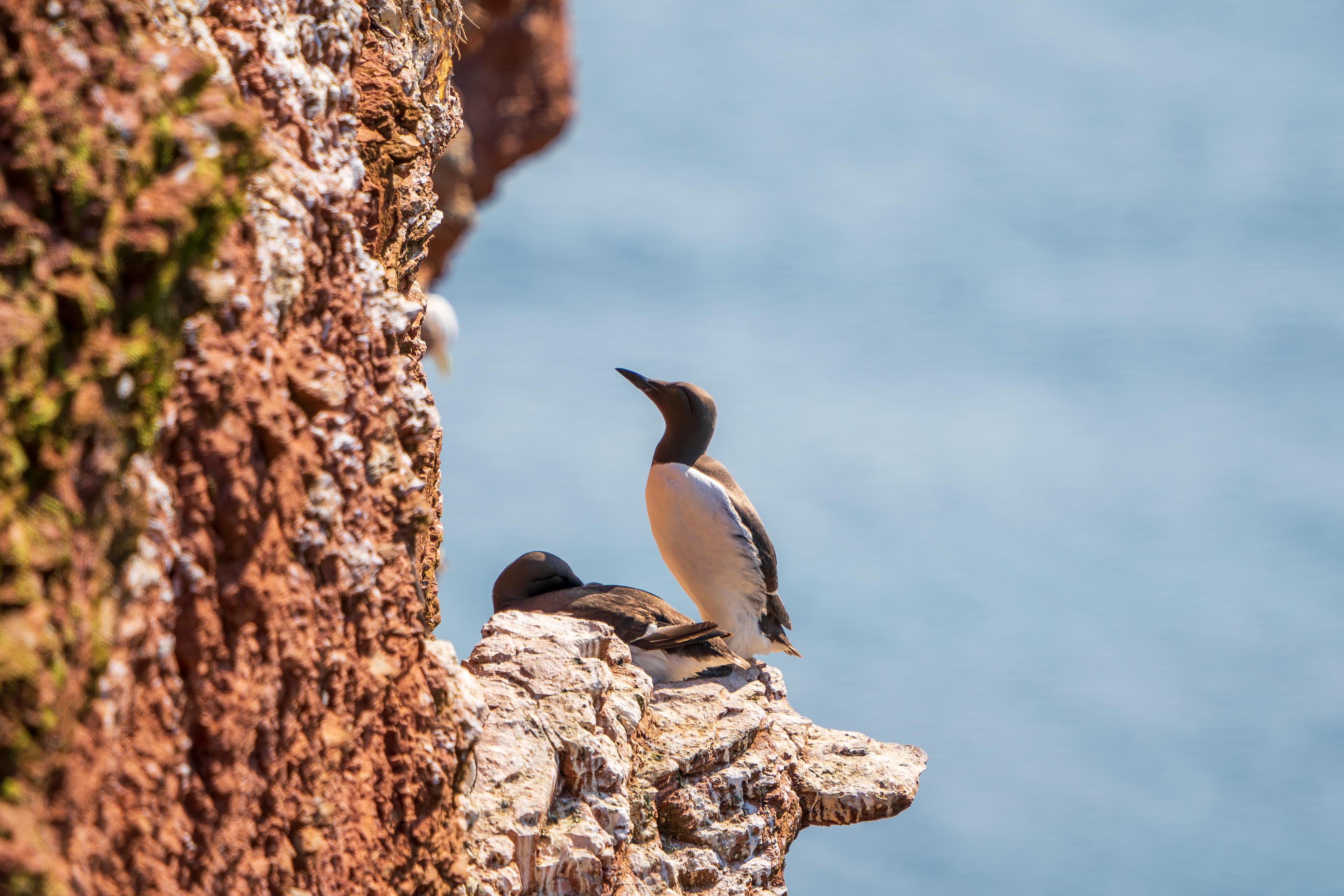
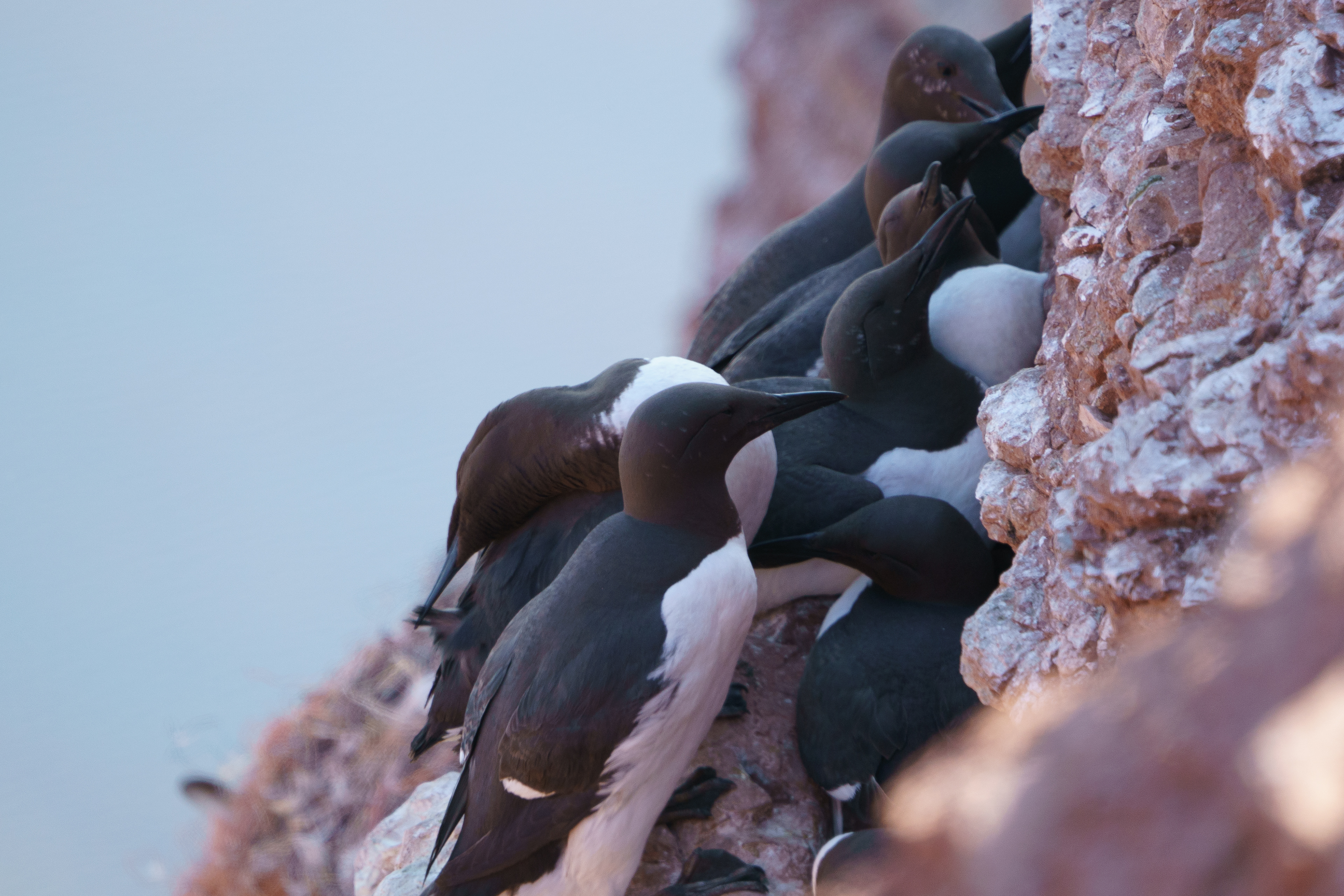
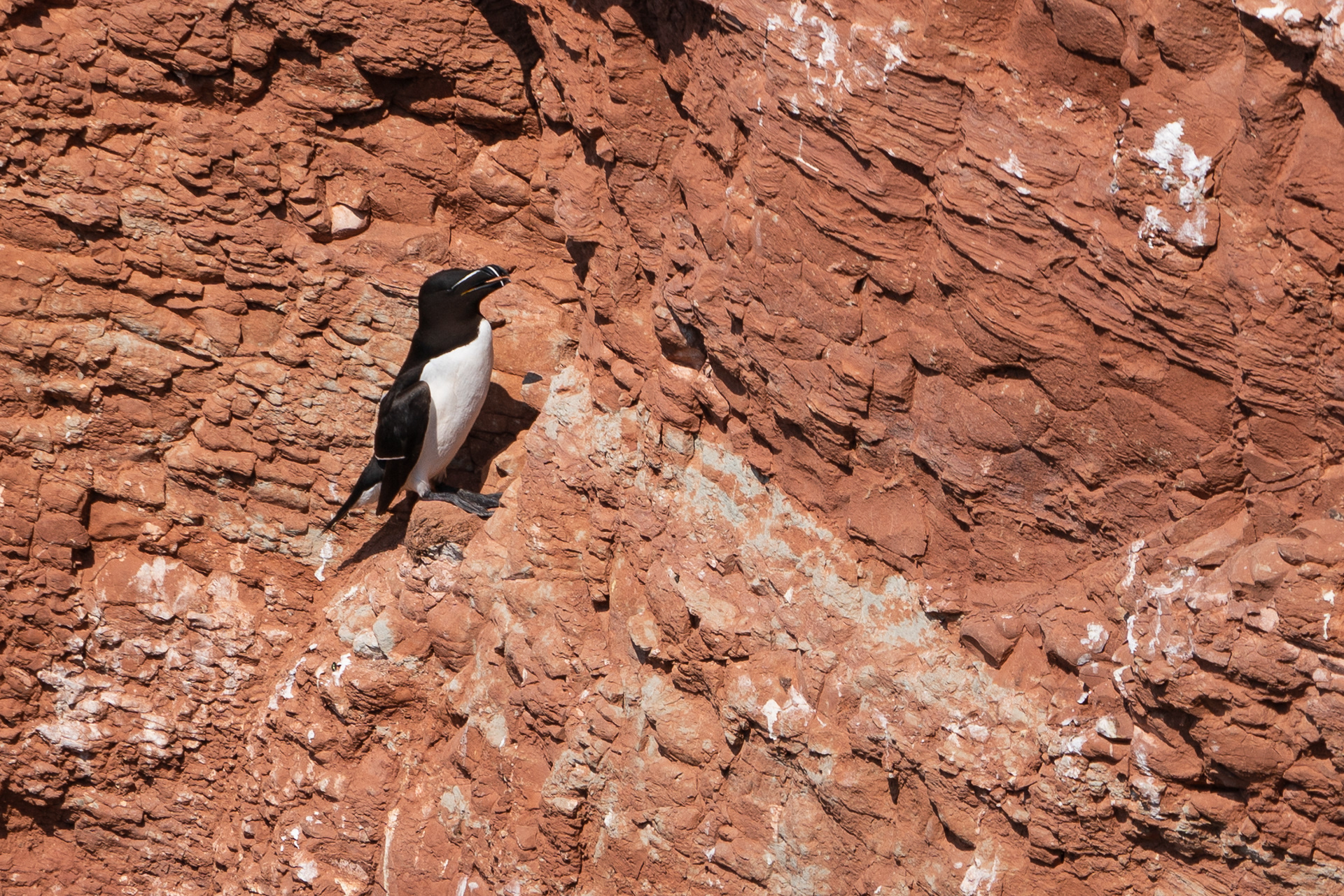
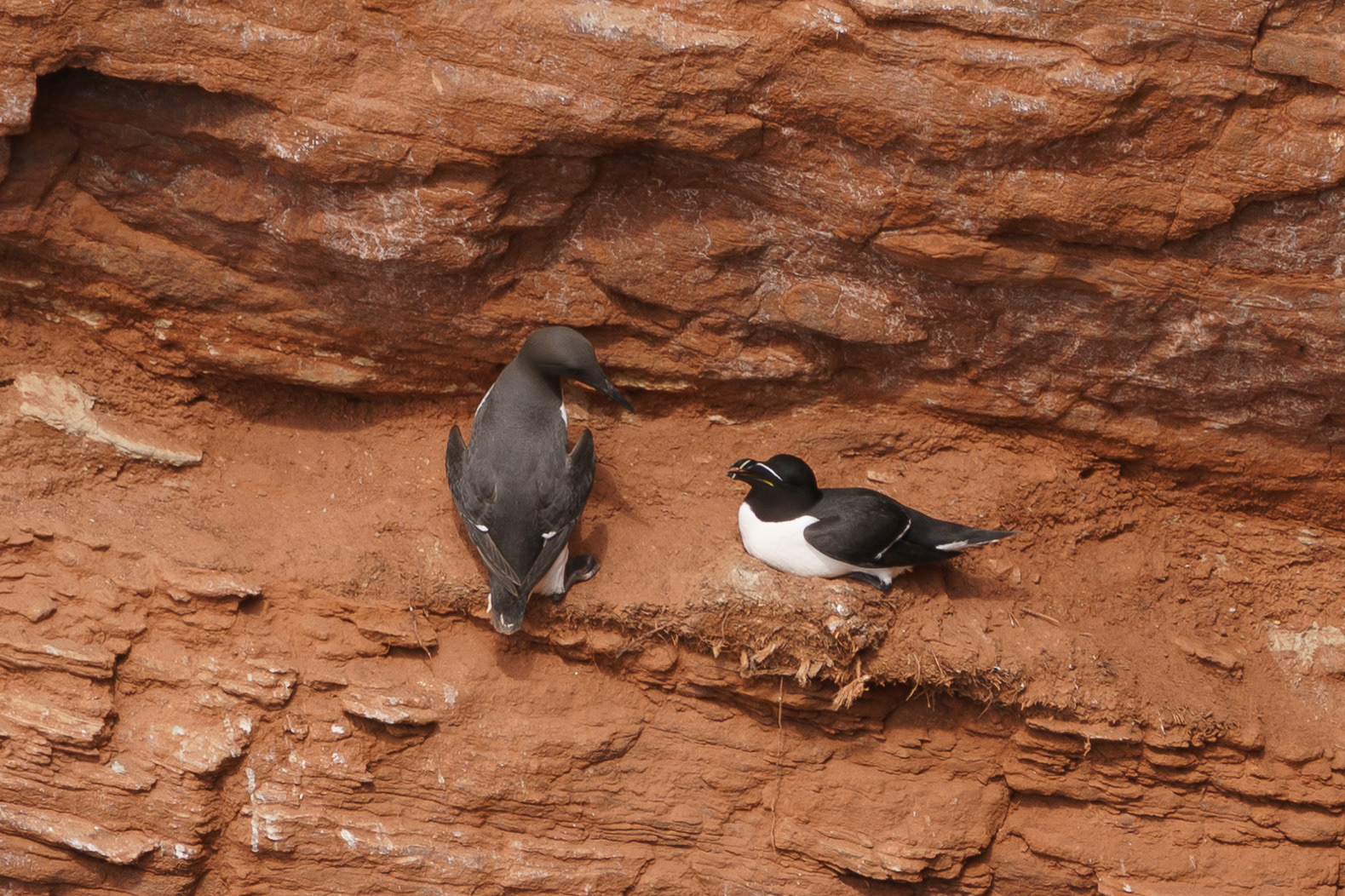
A fun comparison between a Common Guillemot (left) and a Razorbill (right)
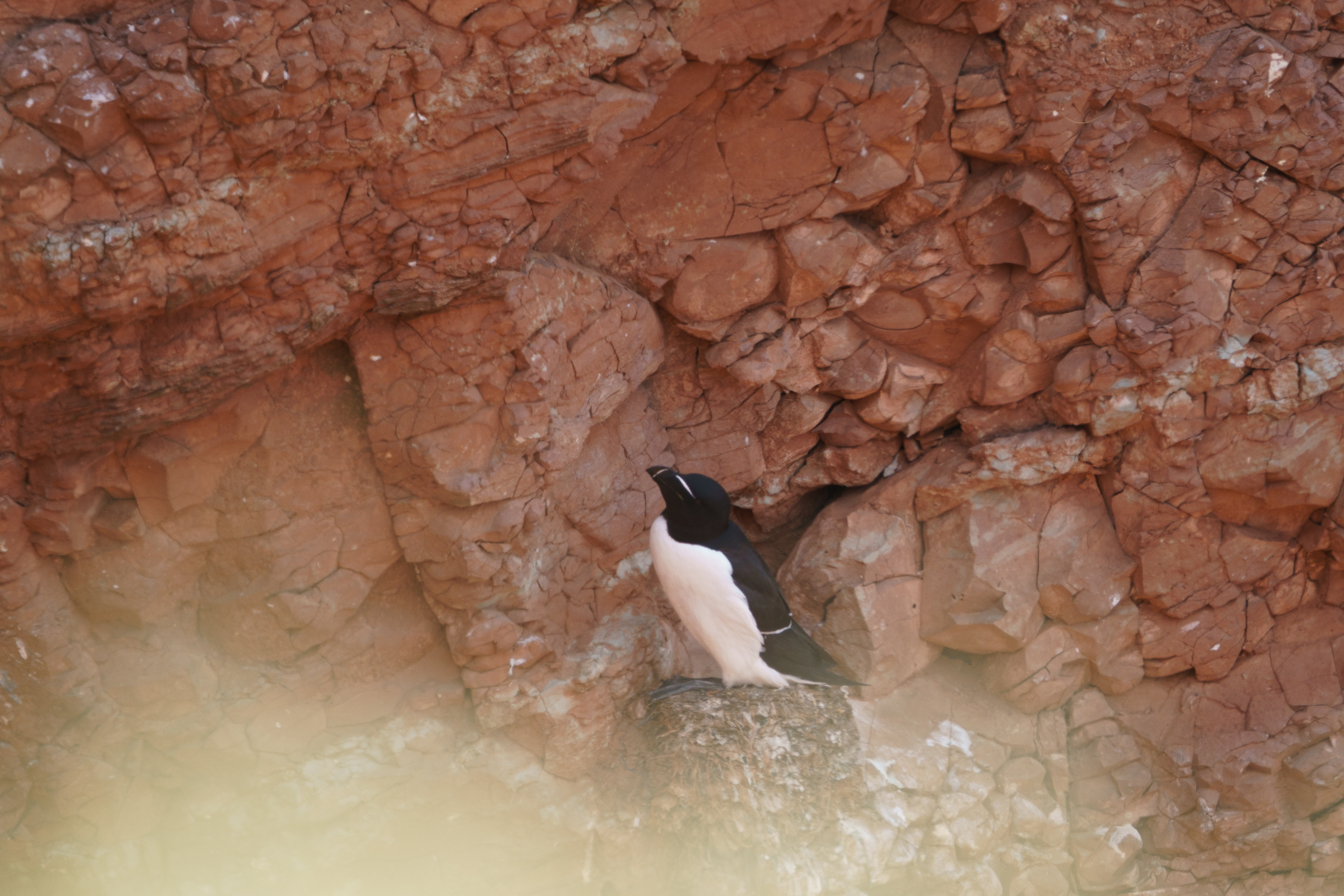
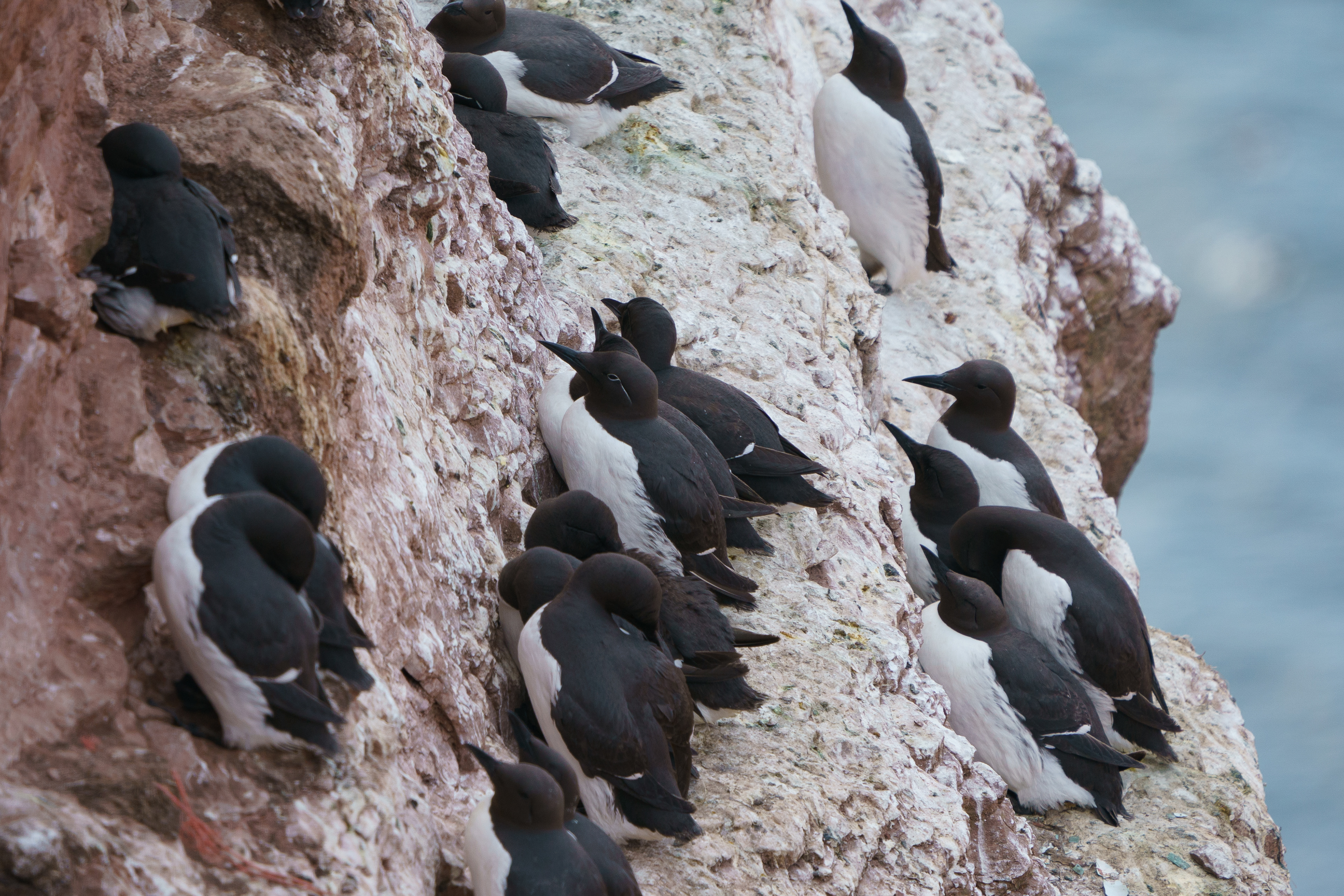
In the middle you'll see NOT a Spectacled Guillemot, but a Common Guillemot with specs ;-)
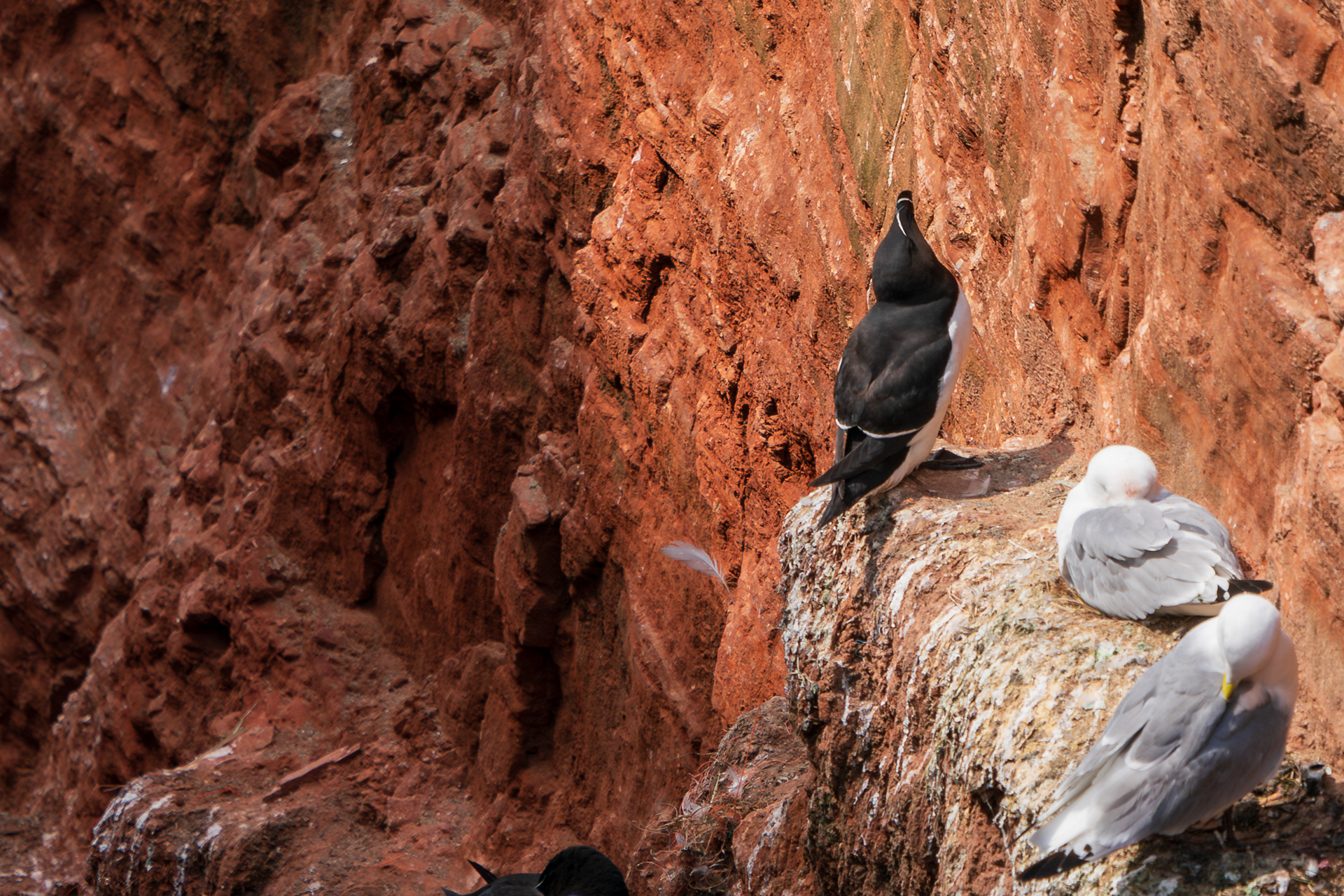
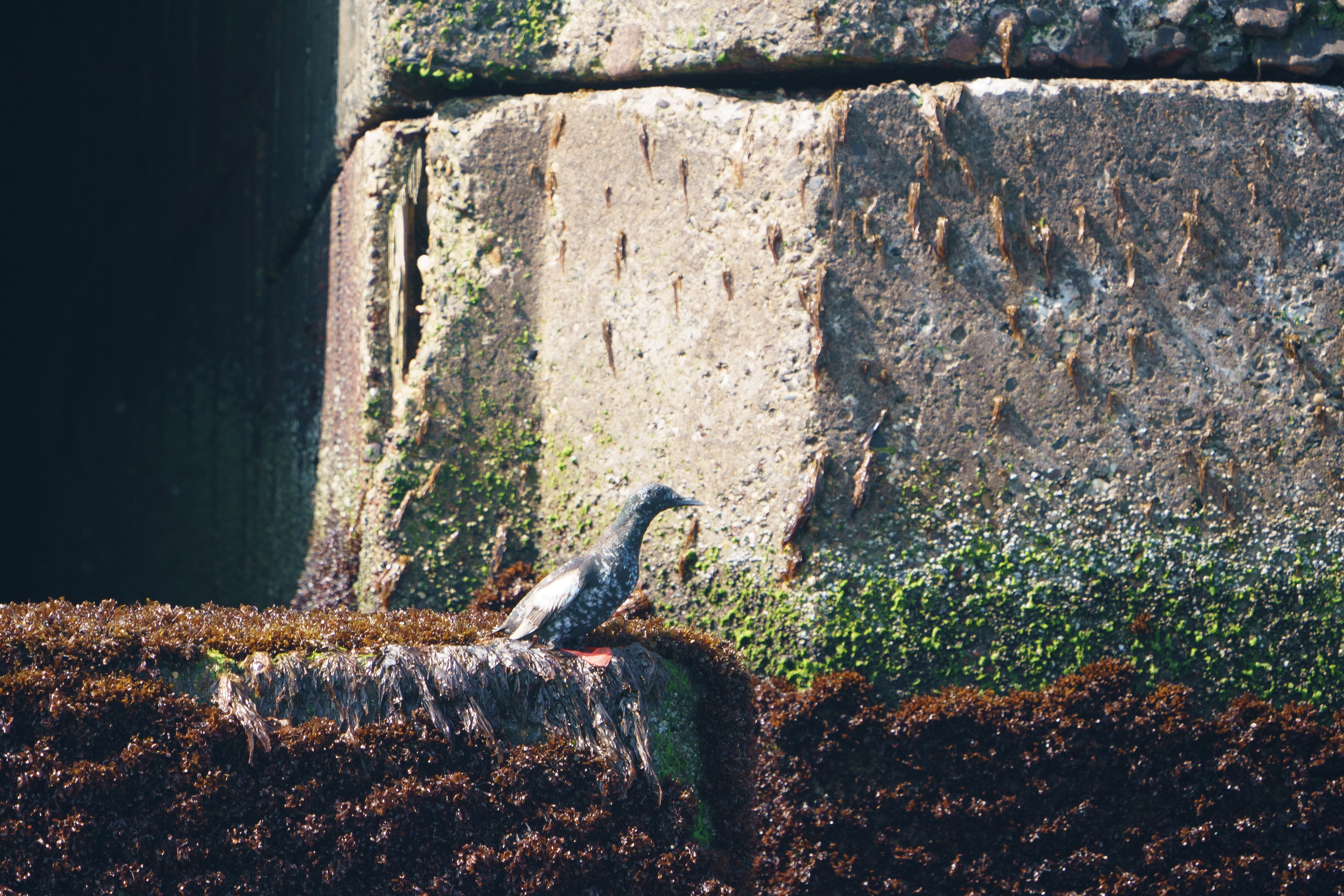
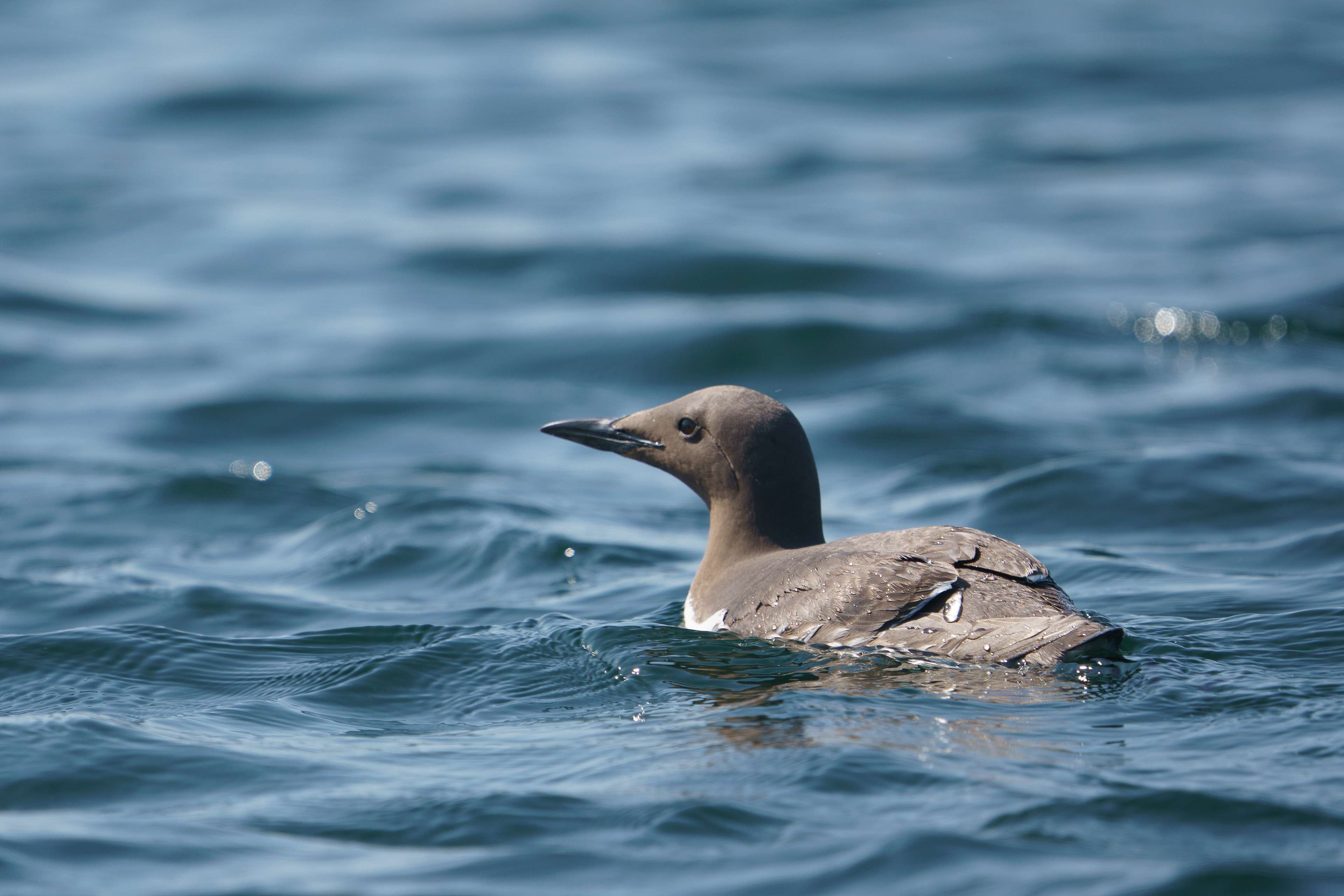
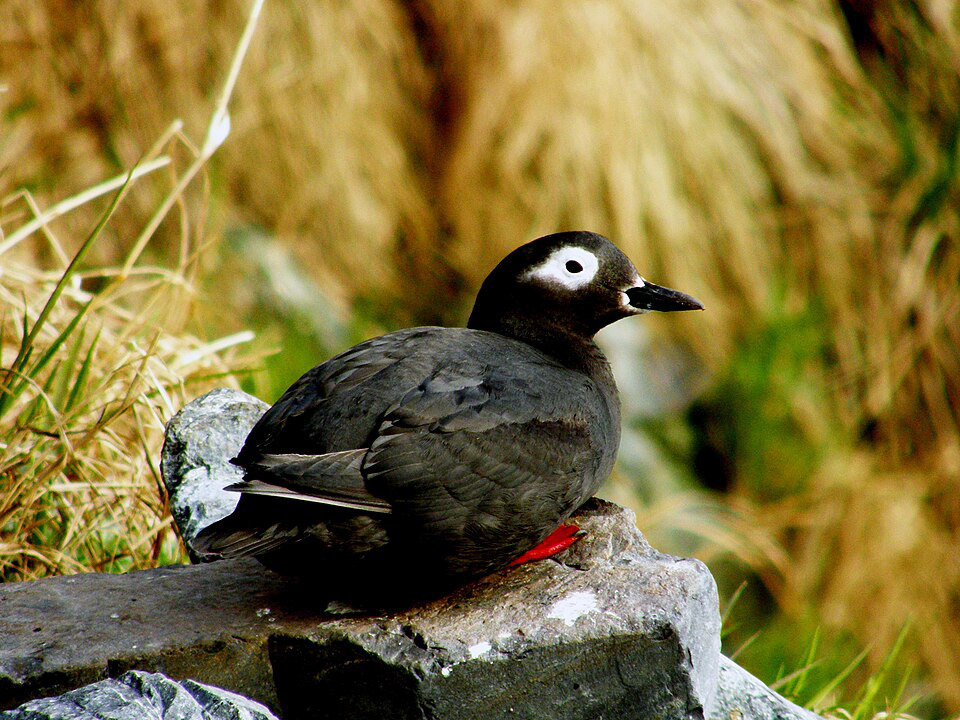
This is not my own picture of a Spectacled Guillemot - Eliezg - CC BY 3.0, https://commons.wikimedia.org/w/index.php?curid=3224607
Black-legged Kittiwake (Rissa tridactyla)
Distinguishing gull species is still a big work point for me to date. Because in my hometown (Haacht) we only see Black-headed Gulls (Chroicocephalus ridibundus) or Lesser Black-backed Gulls (Larus fuscus) in the fields, supply of species for comparison is thus very limited.
In contrast, distinguishing Kittiwakes from other gull species is very easy.
This medium-sized slender gull already looks friendlier than most gull species, thanks to its lovely head.
In contrast, distinguishing Kittiwakes from other gull species is very easy.
This medium-sized slender gull already looks friendlier than most gull species, thanks to its lovely head.
You can immediately recognise them by their black legs and white delicate head with a small yellow bill. They are slender gulls with grey backs and a slightly forked tail, which stands out nicely in flight.
Juveniles have a small, dark ear patch and a black half-collar with grey back.
Juveniles have a small, dark ear patch and a black half-collar with grey back.
When they change to the winter plumage, that black collar changes to a grey dorsal head.
They breed right by the sea or at least in its immediate vicinity. Unlike the other laid species, they incubate one to three eggs per breeding season. June is a nice time to go as that is when most Kittiwakes raise their chicks in abundance.
On Heligoland, more than 2,500 individuals were counted in May '23.
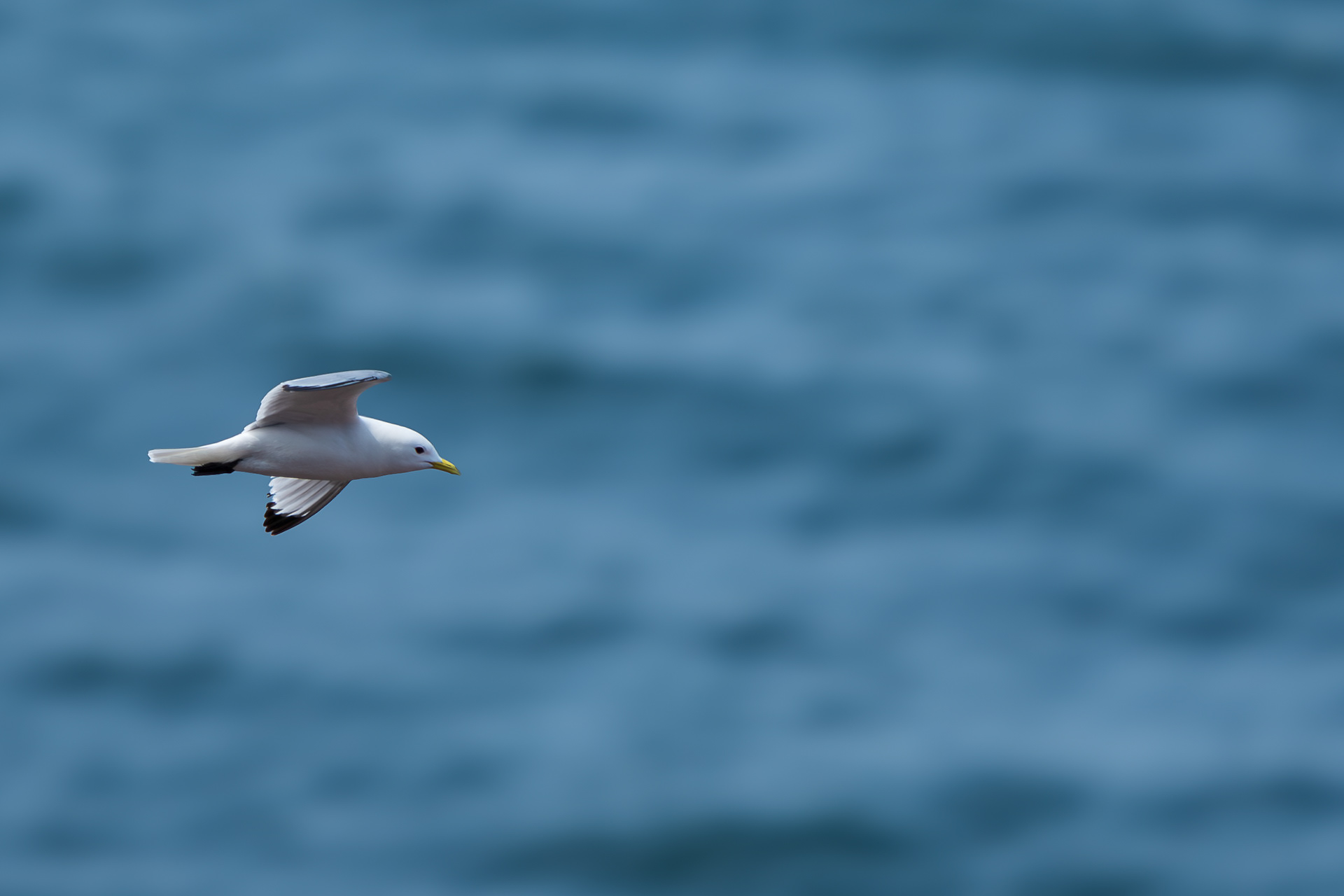
Fly-by

Breeding Kittiwakes with a juvenile in the middle
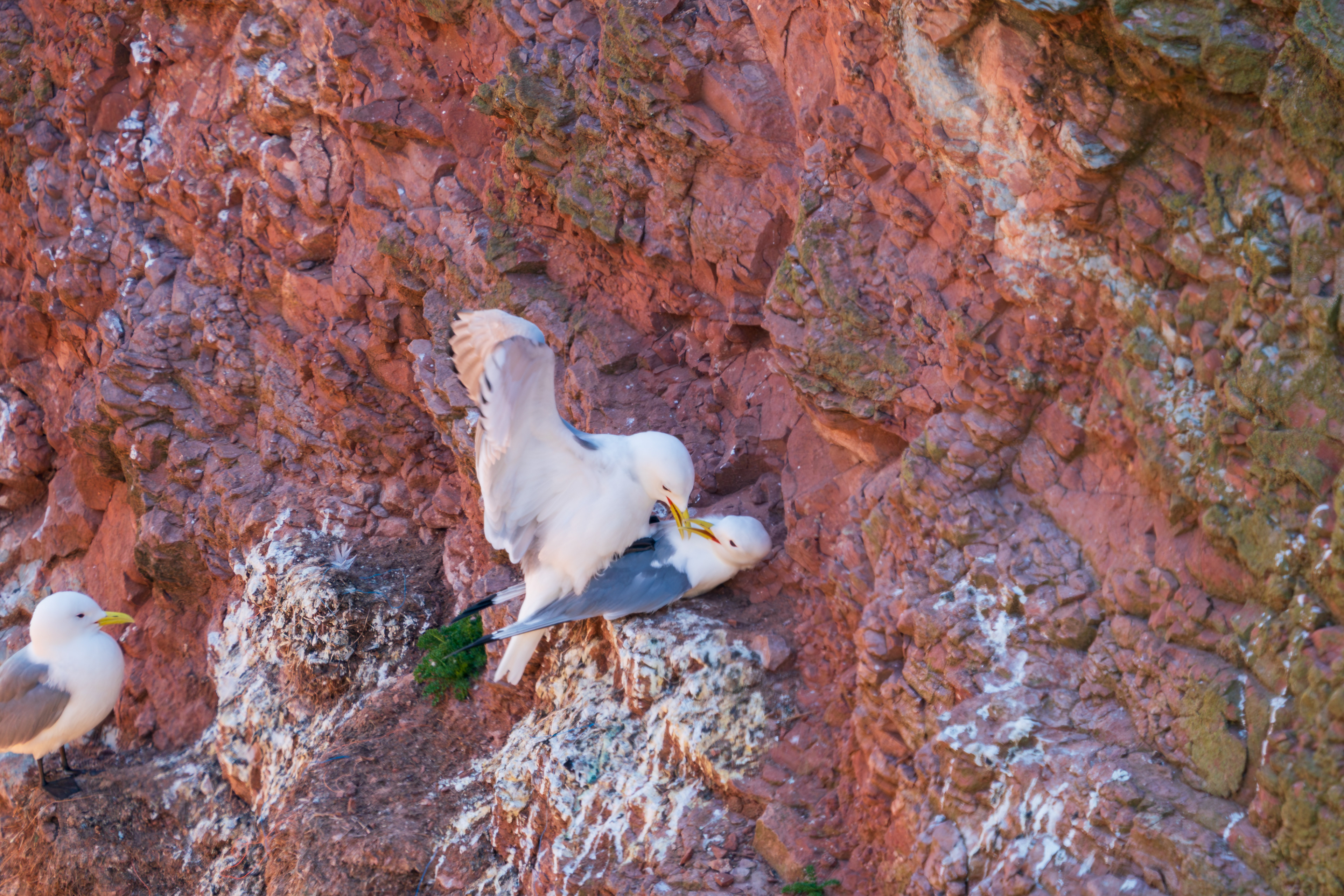
Oh my god! This is just Kittiwake-voyeurism!
